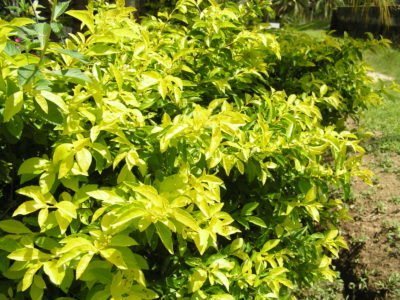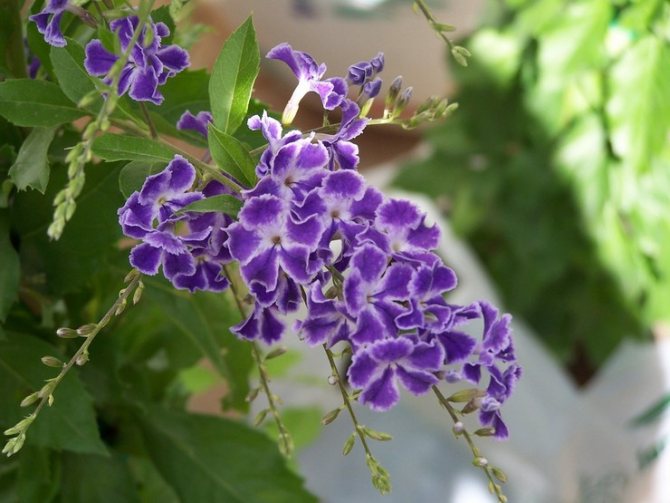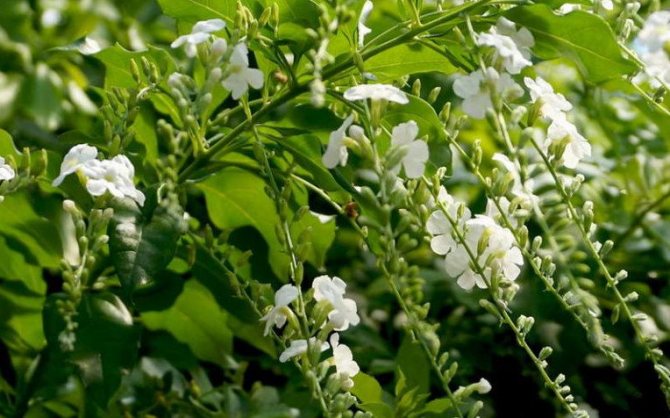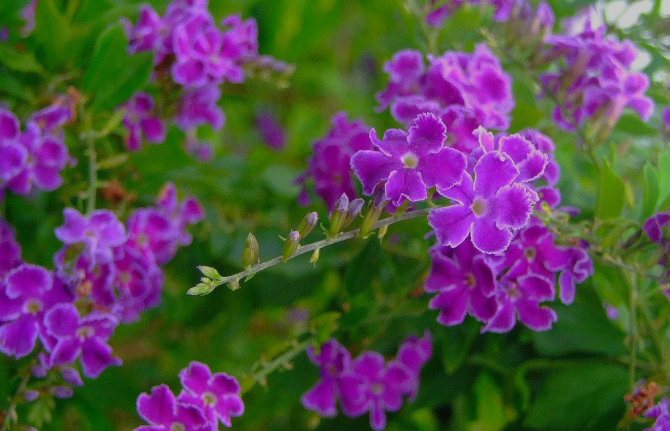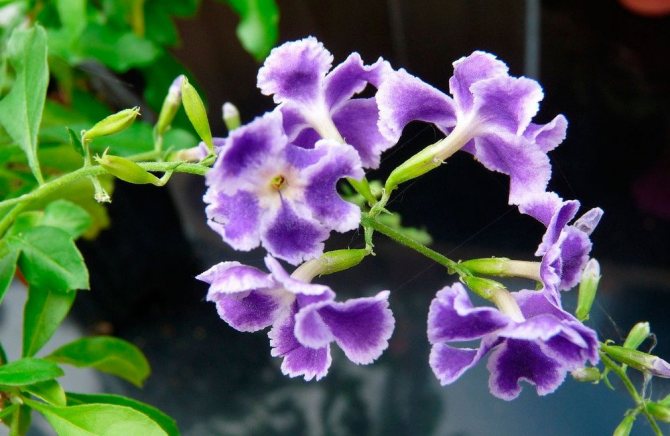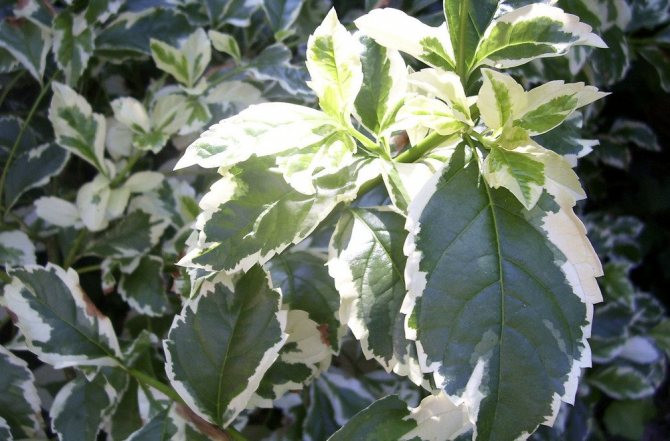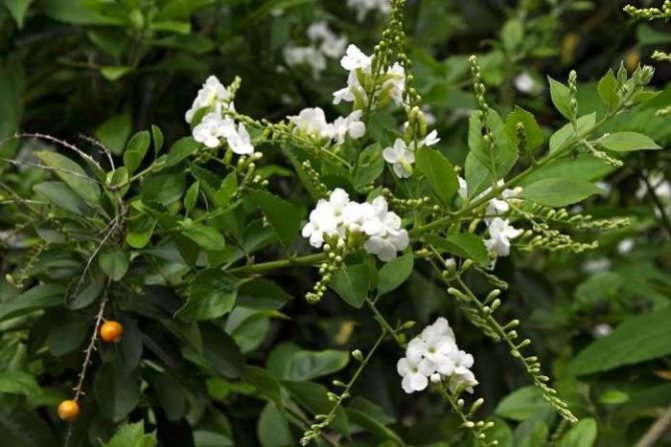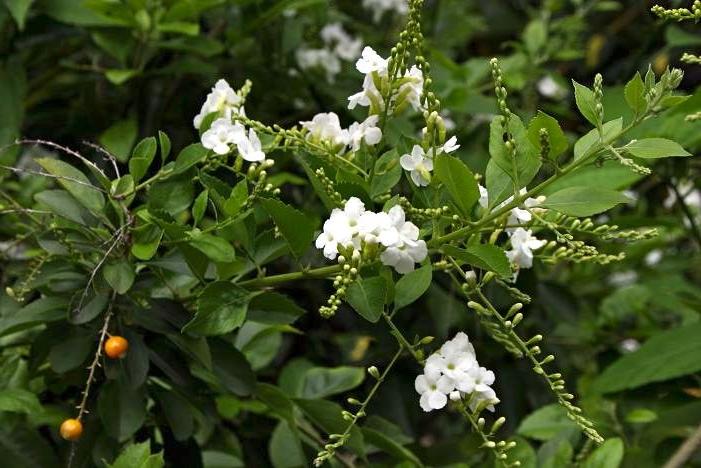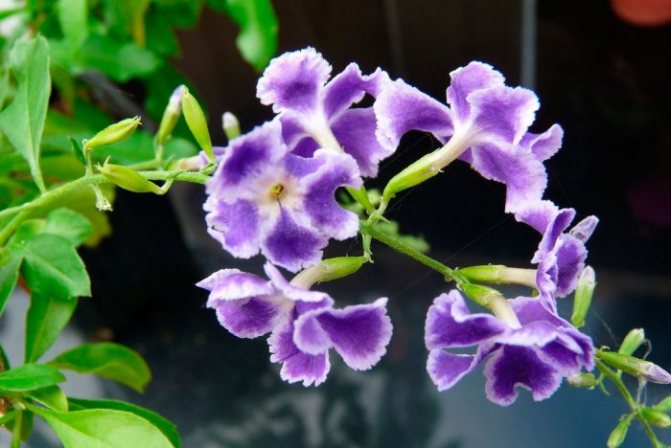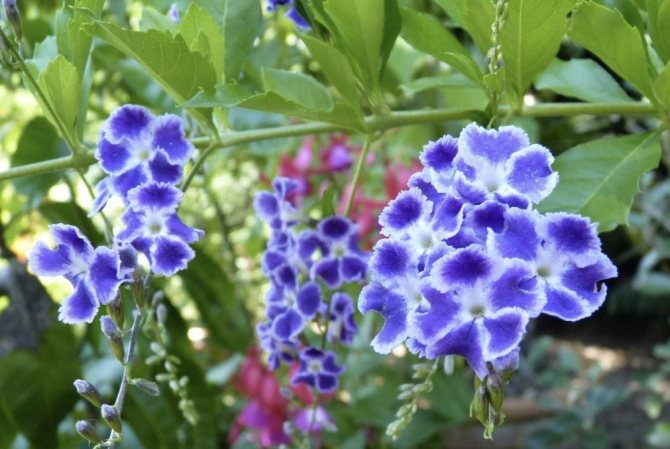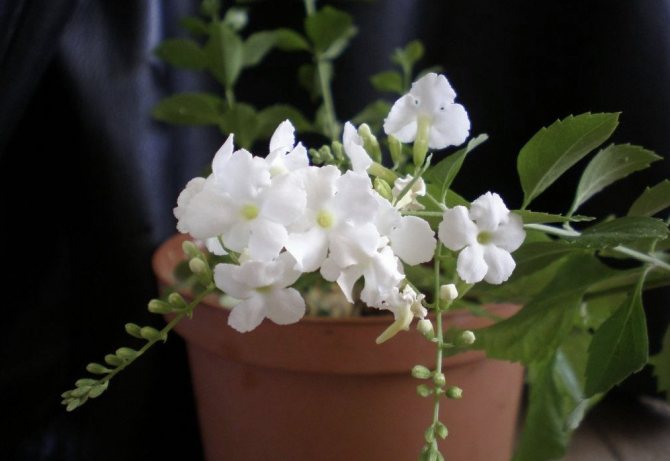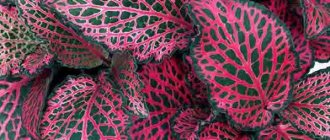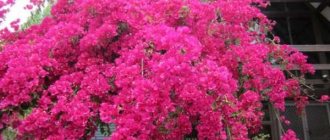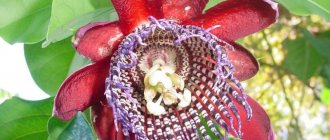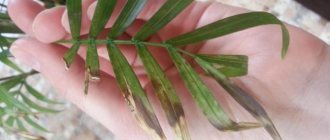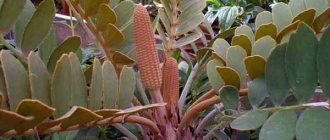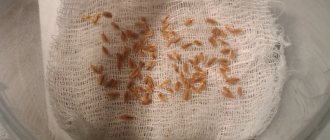The name, dissonant for the Russian-speaking population, is not an obstacle for the plant to gain popularity among flower growers. Therefore, more often you can find such names as birch or pigeon berry. In Europe, it is a farewell tear, less often a heavenly flower. This beautiful and unpretentious exotic will not take much time. Decorative foliage and brightly fragrant flowers can beautify any interior.
- Spider mite, whitefly, scale insect
- Transplant - the main nuances of the procedure
The plant loves the sun very much, but without direct sunlight, it also needs frequent watering and spraying.
The beauty belongs to the Verbenov family. South American origins have left their mark. In natural conditions, a representative of the flora reaches up to 5 meters. In regions with a warm climate, a perennial grows like a garden plant. In the cold and long winter, it became an indoor culture.
Care must be taken - flowers and all other parts of the greenery contain poison.
Resting care
Providing the plant with good lighting, warmth and watering regularly, duranta can bloom even in winter. From year-round "wakefulness" the strength of the plant is greatly depleted, so in winter it is better to give the durant an opportunity to rest.
To do this, by winter, we lower the temperature of the content to 18 ° C. Water sparingly, no need to feed the plant. Lighting is required bright, especially variegated forms experience a lack of light. As daylight hours are shorter in winter, consider using artificial lighting. For supplementary lighting, ordinary incandescent lamps are not suitable. Use fluorescent or gas discharge, LED or phytolamps.
Do not be afraid if the leaves fall, in the spring they will grow back. In the autumn-winter period, a loss of leaf mass by 1/3 is permissible.
CARE REQUIREMENTS
When the duranta came to me, her height was only 15 cm. And, despite her small size, she bloomed all summer. After studying the information about this plant, I found out that it loves light, so I identified the pot in the brightest place. I think that the durant will most likely not bloom on the northern window, unless additional lighting is made.
In leaving, the durant is unpretentious, you just need to follow certain rules. In the spring and summer, the temperature should not be higher than 25 degrees, and if it gets hotter, it is better to take the plant out to the garden or to the balcony. Otherwise, the flower may partially throw off the foliage.
My durant is in a blown greenhouse in the summer. It can also be placed under the crown of fruit trees. As for watering, it should be abundant at any time of the year, but not until the "swamp". A mode should be chosen so that the ground is always slightly damp.
From spring to autumn, once a month, duran-tu should be fed. I use a ready-made complex fertilizer for flowering indoor plants. In winter, if the bush is in a relative dormant period, at a low temperature and without additional lighting, it is better to stop feeding.
Main types
Duranta plumieri
Walnut varieties photo, description. Walnut grade ideal
It is also called "pigeon berry" - it is a low tree, reaching a height of 2.5 meters. Its stems have 4 edges, and the leaves, pointed at the tips, have an oblong or ovoid shape. In length, they reach 10 centimeters. Abundant flowering. Blue or purple flowers are not very large. Flowers are collected in small inflorescences (several pieces), which are located at the ends of the shoots. If the flowering is plentiful, then the branches are as if covered with flowers. The fruits are formed - these are yellow berries, which are similar in size to cherry ones. There are varieties that are intended only for gardening. Their flowers are usually white, and their foliage is variegated.
Duranta lorentzii
This not very tall (up to one and a half meters high) shrub has tetrahedral stems. Its small leathery leaves are egg-shaped or oblong. Their tip is not sharp and there are notches. In favorable conditions, flowering is abundant.
If you are going to grow duranta at home, then it should be borne in mind that it is large enough and takes up a lot of space. And even after spring pruning, it grows strongly again over the summer.
Description of the plant
Duranta is a perennial, evergreen, ornamental flowering plant. The desinting shoot is strongly branched, erect, tetrahedral, the bark is pale brownish in color.
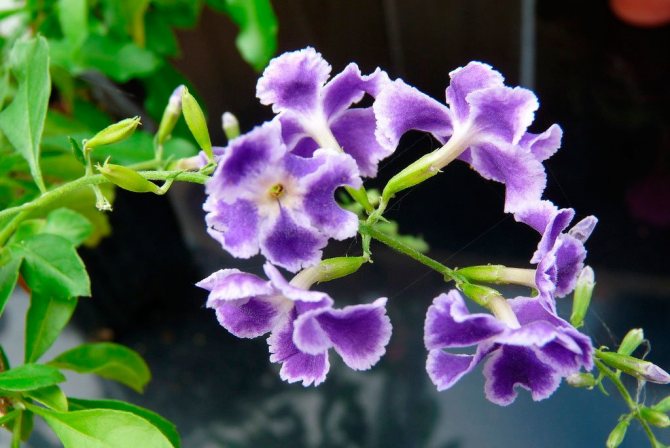
The leaf blade is serrated along the edges, small in size, with very short or completely absent petioles, 3 to 5 cm long, oval in shape. The leaf plate is shiny and painted in light green color. When forming a neat crown, it is often necessary to trim and pinch.
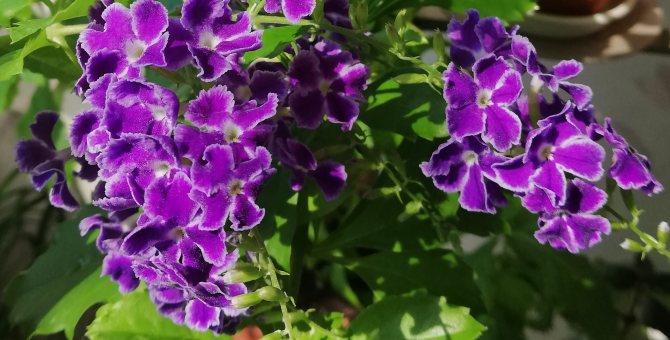

Small flowers of various colors: white, pink, blue, or purple, with monochromatic petals, on which light features are visible, are collected in racemose inflorescences.
The people of Durant are called "room birch", because its leaves are similar to birch. The plant looks bright as in solitary plantings, as in compositions.
The main forms of this plant are (Duranta plumieri) and (Duranta lorentzii).
Duranta plumieri
Low, 2.5 m in height, also called "pigeon berry". Stems are tetrahedral, oval leaves, or elongated, up to 10 cm long. The plant is profusely flowering, when flowering, the branches seem to be covered with small white flowers, gathering in small inflorescences of several pieces, located at the tips of the shoots.
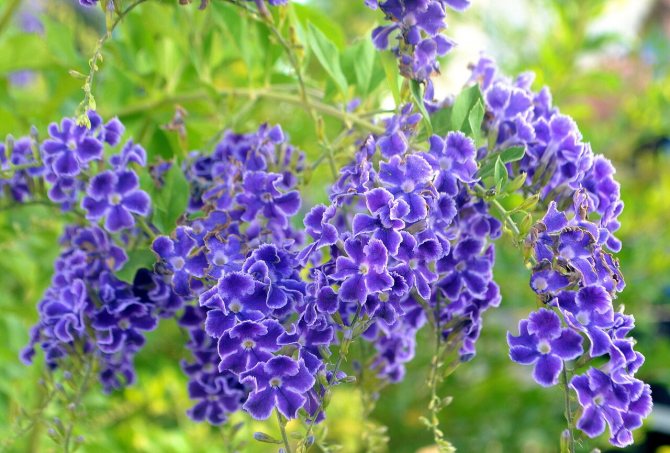

Fruits are yellowish berries, similar in size to cherries. Also, some species are grown only in a garden environment - with white flowers and bright leaves.
Duranta lorentzii
Low shrub, (about one and a half meters) in height, with tetrahedral stems. Leaves are small, leathery, oval or elongated, pointed, with jagged edges, abundant flowering occurs in favorable plants.
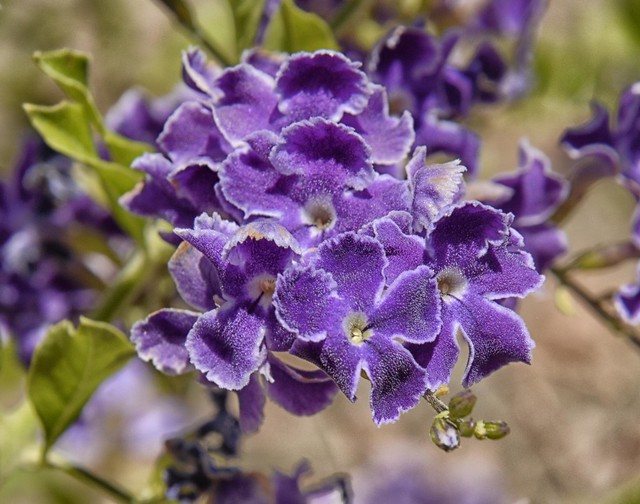

How to transplant durant
Netcreasia flower purple, striped and green Home care Propagation by cuttings
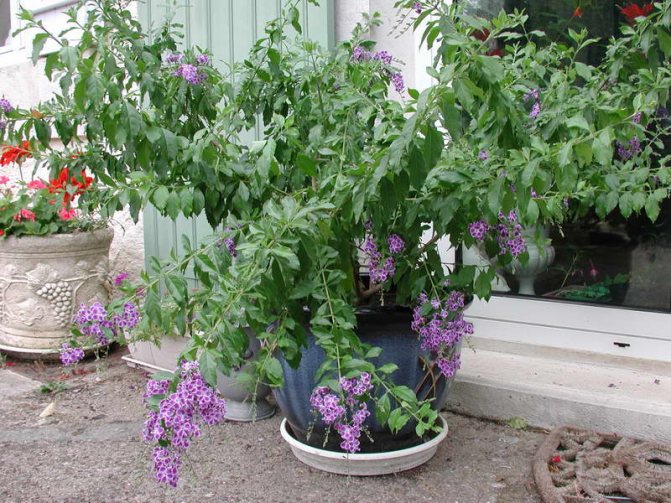

How to transplant durant at home
It is advisable to transplant Durant immediately after purchase, since they are grown in stores in a depleted substrate. Blooming durant cannot be transplanted. The transplant is stressful for the plant and the chic inflorescences will fall off, carry out the first transplant at the end of flowering.
Transplant young plants annually in spring, and adults every 3-4 years. It is difficult to transplant a large overgrown bush, you can do by replacing the top layer of the substrate (remove the layer to a depth of 4-5 cm).
If you want to achieve flowering duranta, grow in a slightly cramped container. A spacious pot gives free rein to build up the root system and the green part to the detriment of flowering.To grow a variegated durant in the form of a tree with a lush crown, you will need a spacious flower pot.
The soil needs a loose, nutritious, well-permeable air and moisture, with a neutral reaction. You can take a universal substrate for growing decorative flowering plants and add sand to it. It can also be "diluted" with pieces of moss and garden soil; as an additive, sod, humus soil and wood chips are used for looseness. There are a couple of options for completely independent preparation of the soil mixture: 2 parts of humus and 1 part each of leafy earth and sand or vermiculite; we take 2 parts of leaf and humus earth, add 1 part of sand and peat.
A drainage layer must be laid on the bottom; it must occupy at least ¼ of the pot's volume. Expanded clay, brick chips, perlite, vermiculite, pieces of polystyrene are used as drainage.
The transplant procedure includes the following steps:
- Disinfect the container, substrate and drainage material;
- Lay a drainage layer on the bottom of the container and pour a little substrate;
- Remove the durant from the old container along with the earthy clod. Shake off the soil a little, you do not need to completely remove it;
- Examine the root system. Rotten parts must be cut off, and the cut sites must be treated with a fungicide;
- Place the plant with the remaining earthy clod in the center of the new container, add soil between it and the walls of the pot, shake slightly to settle the soil;
- Compact the top layer, if the earth has settled, add more. For mature plants that will rarely be transplanted in the future, do not fill the container to the brim. Then it will be more convenient to change the topsoil;
- After transplanting, water and spray the plant;
- To adapt, put in a shaded place, after 3-5 days return to the previous lighting level.
How to choose a healthy plant in the store
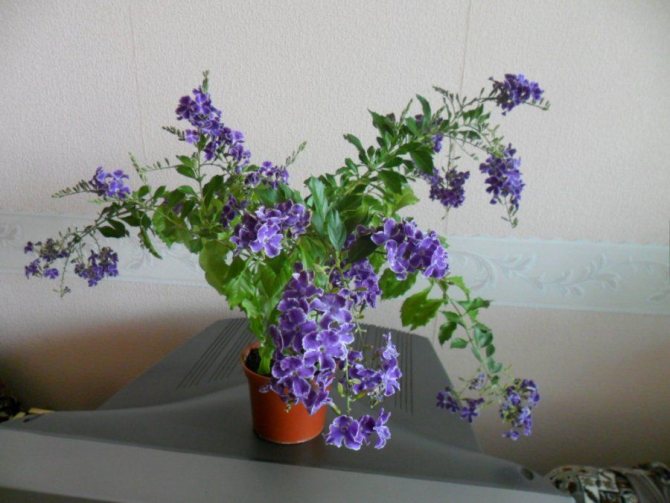

Pay attention to copies that are 1-2 years old. Their crown should be small, but voluminous and dense. The leaves of a healthy durant are dense, shiny, rich in color. They should not have uncharacteristic spots, streaks, dry curled ends, pallor and lethargy. On close inspection, it is easy to identify plants that are attacking insects. Such pets should be discarded.
The shop "birch" exists in depleted soil. Immediate transplant is recommended. But, if you have made your choice in favor of a blooming beauty, then you should wait until the end of flowering.
Types and varieties of duranta
Duranta little geisha
Pig
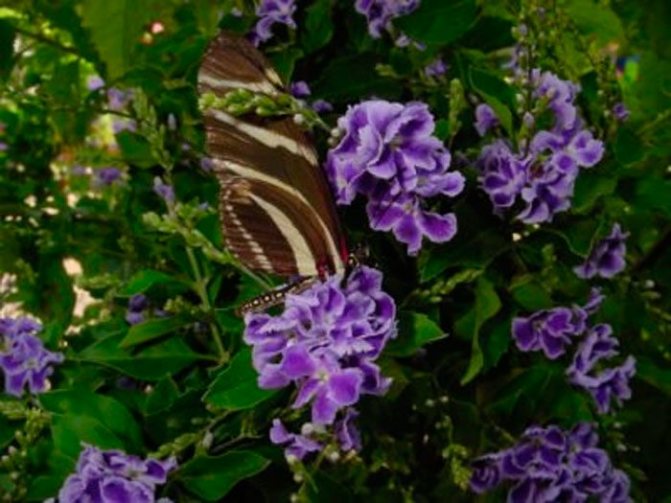

In this species, the flowers are painted in a deep purple hue, their middle is white, and the petals are bordered by a wavy strip of the same color. During flowering, long and lush, racemose inflorescences are formed.
Duranta plumier


The height of such a beautiful shrub is about 250 centimeters. Its oblong-oval leaf plates are outwardly similar to birch foliage, they have a pointed top. This species blooms very luxuriantly and spectacularly with purple or blue flowers.
Duranta variegated


This hybrid plant is adorned with creamy-white-green foliage. Its inflorescences are painted in sky blue.
Blue durant
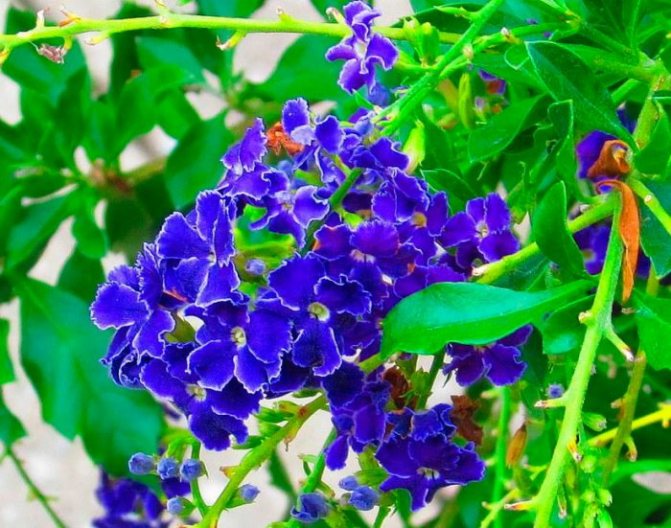

Dark green leaf plates have a pointed tip. Long racemose inflorescences are made up of showy bluish flowers.
Duranta green and gold
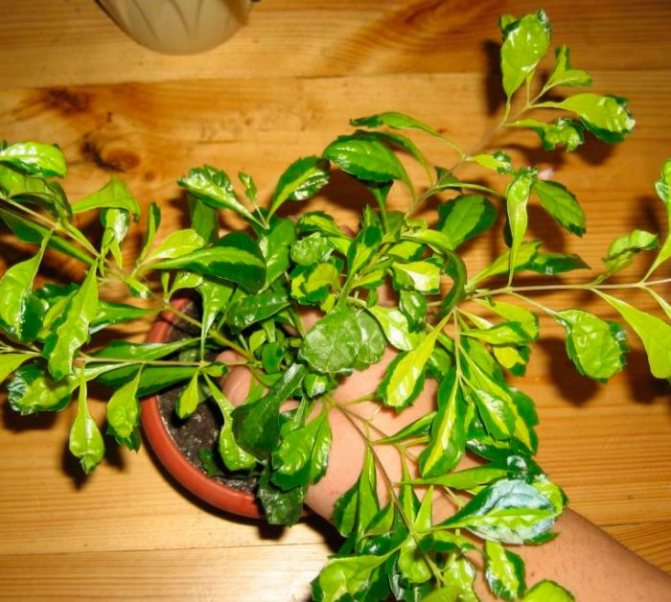

This plant is also called "tricolor". Its spectacular variegated foliage has an unusual color: its edge is green, and the central part is yellow. The blue flowers have a very pleasant, delicate scent. They are part of the racemose inflorescences, which are located at the tops of the stems.
Duranta white
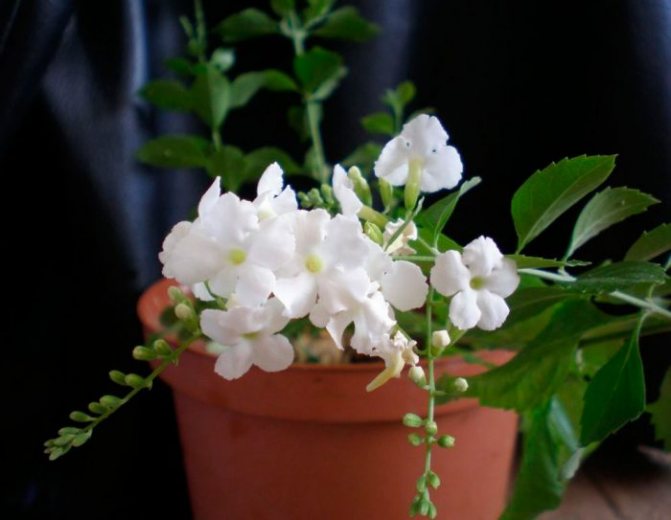

The height of such a shrub is about one and a half meters. Its tetrahedral stems are adorned with small, leathery, oblong-ovoid leaf plates with pointed tops.Spectacular snow-white flowers have a very pleasant sweetish vanilla scent.
Duranta suite memoris


Ovate leaf plates are colored dark green. On the petals of purple flowers there is a spectacular whitish edging. The flowers are part of the racemose inflorescences hanging down, their smell is very pleasant.
Duranta erecta alba


This type is most popular with flower growers. The bush is decorated with large smooth diamond-shaped foliage with a jagged edge. In height, it reaches no more than one and a half meters. The flowers, which have a very pleasant smell, are collected in lush racemose inflorescences, they can be painted in white, purple or blue.
Duranta: rules for growing in the house
Representatives of the genus Durants take shrub or tree-like growth forms, and the height of the shoots can vary from one and a half to 4 meters, often the branches are covered with thorns. The stem becomes lignified over time, and the foliage never falls off the plant. Shoots are highly branchy. The contours of the stems are tetrahedral, the peel has a brownish or light brown tint.
After flowering, the fruit ripens, which in duranta take the form of a rounded berry with an orange color. This berry is surrounded by a sepal cup. The fruit contains eight seeds.
Read also: Rules for the successful cultivation of nemophila in the open field
Reproduction methods
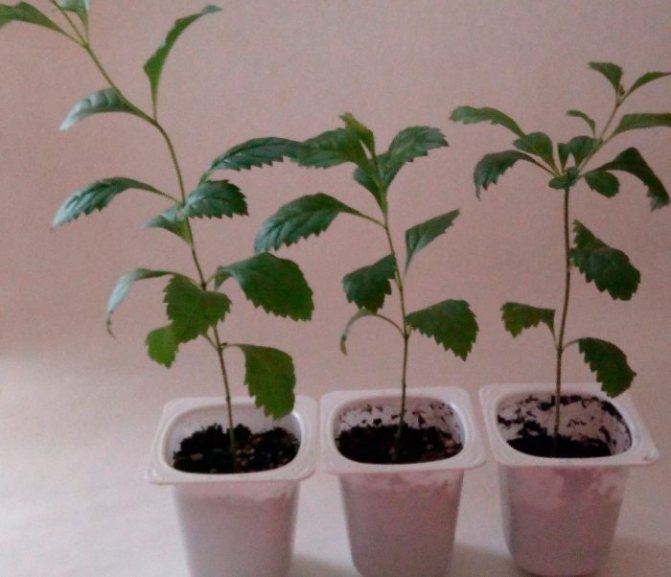

Cuttings
Indoor durant can be propagated using cuttings. In order to prepare them, it is necessary to cut off the semi-lignified apical shoots. For rooting, the segments are planted in a mixture of peat and sand, but before that they are immersed for some time in a solution of a means that stimulates the formation of roots. In order for rooting to be successful, you will need increased air humidity, and even lower heating of the box to 25 degrees. In order to create conditions suitable for rooting, it is recommended to place the cuttings in a mini-greenhouse, it will be much easier to maintain the required temperature and humidity there.
Seed propagation
In order to grow durant seedlings for planting in the garden, the seed (generative) method of reproduction is often used. Immediately before sowing, the seed is immersed for 24 hours in a warm solution of Epin or Zircon. When the allotted time is up, the seeds are sown in a box filled with a substrate, and they are buried in the soil mixture by 15 mm. Then the crops are harvested in a mini-greenhouse, which is transferred to a well-lit and warm (about 25 degrees) place. The first seedlings should appear after 1-2 months.
Reproduction and transplantation of durants
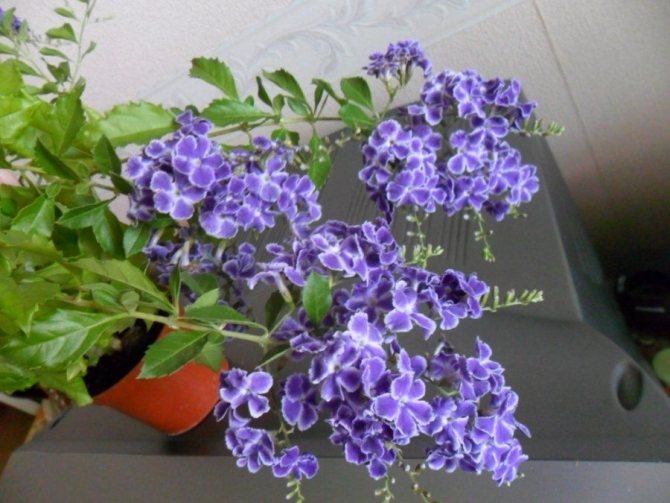

Transplant - the main nuances of the procedure
The age of the room pet plays an important role. The young representative demands an annual change of "place of residence". Adults, a flower that has greatly increased in size, is not only difficult to transfer to another container, but also dangerous for its health. In this case, changing the top layer of the earth is enough. Breeding takes place in two ways.
Cuttings
The easiest way. All the qualities of the mother bush are preserved. It usually occurs in the fall. Not a new, but not an old shoot is selected as a planting material. It is cut with a disinfected garden tool. After drying and spraying with a growth stimulant, it is deepened into the substrate.
Suitable conditions for growth and development are greenhouse cultivation. But, if this is not possible, an ordinary plastic container with a tight-fitting lid will come to the rescue. For rooting, a mixture of equal parts of peat and sand is used. Pre-it is abundantly sprayed. The room is selected with a temperature of at least +22 and good illumination. Airing and moisturizing takes place every day.
Seeds
A long and time-consuming process is relevant if it is not possible to get cuttings. Varietal qualities are most often lost. The best time is the beginning of spring. This requires a similar greenhouse. The seeds are practically not deepened into the ground. It is enough to make a hole 0.5 cm. Instead of earth, they take sand. Seedlings appear only after 7-8 weeks. They almost immediately dive into separate cups.
As soon as 3 leaves turn green on each seedling, you can transfer them to a full-fledged pot.
Durant care at home


Tropical flowering durant belongs to unpretentious plants, but there are still several requirements that are recommended to be fulfilled when keeping it at home.
Location and lighting
Duranta is very fond of bright light in large quantities, but the direct rays of the sun can harm her, so it is necessary to protect the plant from the burning sunlight at midday. It is advisable to grow bushes on the windowsills on the east or west side of the dwelling. There will not be enough light on the northern windows, which can negatively affect flowering. On the south side, plants can suffer from the scorching sun during the daytime. Sunburn will remain on the leaves, which will lead to a loss of decorativeness.
The duration and splendor of flowering depends on the amount of light during the day, which means that during the period of short daylight hours (in autumn and winter) it is necessary to supplement the plants with fluorescent lamps or phytolamps. The culture should be illuminated for at least 10-12 hours a day.
Temperature
Temperature requirements for growing durants depend on the season. In the summer, the plant is most suitable for a temperature of 20-22 degrees Celsius, maximum - 25 degrees. Higher temperatures will lead to massive leaf dropping. To prevent this from happening, you need to transfer the containers with flowers to a cooler place in a timely manner (with the onset of extreme heat). It can be an open veranda, terrace, garden or balcony. Circulation of fresh air will be the only salvation for duranta in the summer.
Duranta also prefers moderate air temperatures in winter. The favorable temperature is 18-20 degrees, the minimum is 14 degrees.
Temperature changes are very dangerous for a houseplant, but regular airing is very useful for it. This must be taken into account in winter, when central heating is working and the proximity of hot batteries is undesirable, and it is also worth not allowing drafts with cold air flows.


It is recommended to water durant flowers in moderation throughout the year. For irrigation, you need to take only settled water with a temperature of 20-22 degrees. Plants react equally negatively to the lack and excess of moisture in the soil. The potting medium should always be slightly damp.
Air humidity
The exotic durante plant requires increased moisture, which can be maintained with regular daily spraying. Water procedures should be carried out in the morning. Before flowering, it is recommended to spray the entire bush, and after the buds open, only the leafy part. Delicate petals can deteriorate from droplets of water falling on them.
For duranta, a store-bought substrate designed for flowering indoor plants is ideal. If it is possible to prepare the soil mixture on your own, then you will need two parts of leafy land, as well as one part of humus, peat and turf soil, and coarse sand. At the bottom of the flower container, be sure to lay good drainage, and after it the soil mixture. The drainage layer will prevent water stagnation and protect the root of the flower.
Top dressing and fertilizers
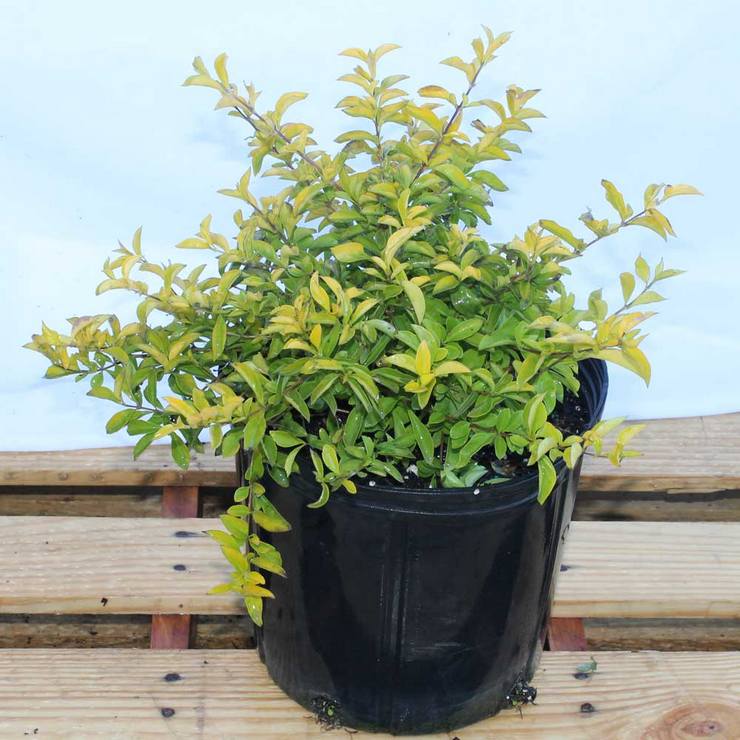

Complex mineral fertilizers should be applied throughout the year once a month. If in the autumn-winter period additional highlighting of plants is not carried out, then additional feeding is not worth it.Plants in a relative dormant period do not need additional nutrition.
In the first 3-5 years, the durant must be transplanted every year, in subsequent years - as needed. When transplanting, the longest and thinnest roots can be shortened slightly so that they do not braid with an earthen ball. Instead of replanting in containers with mature bushes, it is recommended to replace the topsoil. For large indoor plants, this procedure must be repeated annually.
A fast-growing shrub is able to significantly increase in size and rise in height during the year. An elongated plant is less decorative and should not be allowed. Before the start of an active growing season, durants need to be heavily pruned, which will help curb growth, reduce crown volume and increase bushiness. Frequent pinching of the tops of the shoots is not recommended by experienced growers, as this will positively affect the splendor of the crown, but negatively for the flowering period. Its beginning can be postponed indefinitely, because it is at the ends of the shoots that inflorescences are formed.
Conditions for durants (table)
| Season | Lighting | Humidity | Temperature |
| Spring | Bright, a small amount of direct sun will be helpful. Especially important for variegated forms, with a lack of light, they turn green. To place durants, the south-west and southeast are suitable; on the south side on sunny days, you need to slightly shade the plant. In the north, in partial shade, it will grow, but is unlikely to bloom. | Slightly increased, 60–70%.
Do not let water get on the buds and flowers, they may die. | Moderate, about 20-23 degrees. Duranta does not like drafts and sudden changes in temperature; do not place the plant near an open window. |
| Summer | For the summer, a pot of durant can be sent for a walk - to the garden or to the balcony. Fresh air enhances flowering. But protect the flower from the wind and the hot sun. Too much light can darken the foliage. | Moderate, better up to 25 degrees. Protect from heat. With a strong increase in temperature, it can shed leaves. | |
| Fall | Lighting is bright light with several hours of direct sun. Provide artificial illumination with phytolamps when the daylight hours are shortened. | Moderate or increased. The warmer it is in the room, the higher the humidity should be. Do not place the plant next to heating appliances. Spray as needed. | Moderate, about 20-23 degrees. Lower the temperature gradually. |
| Winter | Cool, optimally + 16-18 degrees. Do not place the plant next to heating appliances. Below 12 is unacceptable, may shed leaves. A cool hibernation is useful for setting buds. At higher temperatures and a lack of light, shoots can stretch and weaken. Protect from drafts. |
About cleanliness and humidity
For duranta, as for all deciduous plants, the purity of the foliage is important. But her leaves are rather small, and wiping each of them is long and tiring. Leaf care can be simplified by arranging a flower shower from time to time. Wash it under a gentle stream of slightly warm (up to 30 degrees) water, after covering the soil in the pot with plastic. This procedure will help not only cleanliness, but also moisturize the plant, and also destroy insect pests.
An infusion of onion husks will give a glossy shine to the leaves of duranta. Pour the onion peel into the jar halfway, tamp it and pour boiling water to the top. Let the liquid sit for a day or two. Strain the infusion and sprinkle on the duranta leaves. By the way, this will also be a good prevention of a spider mite attack.


The cleanliness of the leaves is important for the health of the plant, wipe and wash them regularly
Duranta is from the tropics, but has a negative attitude towards the heat. In the heat, it can lose some of its foliage. You can help her by increasing the humidity of the air.
Video: how to increase the humidity in the heat
Diseases and pests
While caring for a plant, you need to monitor the appearance of pests and diseases, taking the necessary measures in time. A very dangerous disease of duranta is root rot. It is dangerous because there are practically no means against it for a successful struggle. At this moment, the leaves of the plant turn black and die off, and mold appears on the root collar. Root rot arises from waterlogging of the soil cover. In this case, the flower must be removed along with the soil, and the container is disinfected.
If a cobweb is found on the flowers, then this is a sure sign of the appearance of a spider mite. The leaves begin to turn yellow and fall off. To combat it, flower growers use the insecticidal preparation Fitoverm. After sanitization, a plastic bag is put on the bush for 2-3 days. Very often, shield aphids can appear on the plant. In this case, dark tubercles appear on the leaves and stems. They are scraped off with a blunt end of a knife, and the damaged areas are washed with a strong soapy solution. Also, a sick flower is treated with Atellik, Fosbecid or Metaphos.
Duranta - pigeon berry
Homeland tropical rainforests of South America, India, Mexico. This is a shrub with leaves that have serrated edges and flowers of various shades. - lilac, blue, purple, pink, white. In total, about 36 species of duranta are known in nature in the form of shrubs or small trees. Durant is annually, sometimes several times over the summer, cut and pinched to give the crown a beautiful shape.


<>
Duranta - a perennial ornamental flowering evergreen plant with a lignified stem. The stem is erect, profusely branched, covered with thin light brown bark, and has four edges.
The leaf blades are small (up to 3-5 cm in length), oval or teardrop-shaped, light green, shiny. Duranta leaves outwardly resemble birch leaves, which is why this plant is sometimes called a room birch. Leaf petioles are strongly shortened or completely absent.
The flowers are small, light blue, collected in hanging inflorescences-brushes. Flower petals are solid with white lines on the background. Duranta can be grown both as a single plant and in compositions.
Views
Duranta plumieri, or popularly - "pigeon berry", in nature it grows in a tree up to 2.5 meters high, has tetrahedral shoots, and the leaves can be either ovoid or oblong, pointed at the ends, up to 10 cm long. Many flowers are formed, they are small in size, purple or blue. Flowers in several pieces are collected at the ends of the branches, when the flowering is plentiful, the branches are strewn with flowers. Fruits in the form of yellow berries, the size of a cherry. Duranta Plumier has garden varieties that are not suitable for growing in rooms, they can be variegated with white flowers.
Duranta lorentzii - this shrub, reaching a height of 1.5 m with tetrahedral shoots, unlike the previous species, has small leathery leaves, ovoid or oblong, the end of the leaf is not pointed, but has serrations. Can bloom very profusely under favorable conditions.
Durants grow into rather large trees, so they need a lot of space. Even if the plant is heavily pruned, it will grow strongly again over the summer.
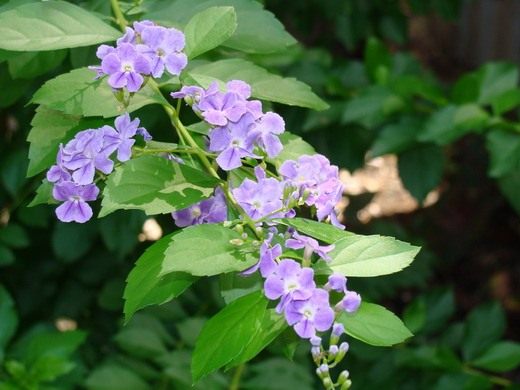

<>
Growing
Temperature: Duranta is thermophilic, in winter it needs a room with a moderate temperature, not lower than 16 ° C. At elevated temperatures, a scabbard can attack the durant. The room should be ventilated, but cold drafts are not allowed.
Lighting: Bright diffused light. Grows well on a window to the west and east. In summer he prefers keeping outdoors, with gradual accustoming to the hot sun.
Watering: Abundant from spring to autumn, moderate in winter. The soil should be slightly damp at all times.
Fertilizers: Every year in spring and summer, fertilizing is carried out with liquid complex fertilizer for indoor plants.
Air humidity: Loves humid air, so durant is regularly sprayed, in winter protected from hot air from central heating batteries. When kept in a room with too dry air, the durant can be affected by spider mites and scabbards.
Transfer: The transplant is carried out annually in the spring, large specimens are transplanted every 2 years. Soil - light soddy - 1 part, leaf - 2 parts, peat 1 part, humus - 1 part and sand -1 part.
You can feed durants with organic fertilizers, for this they use well-rotted cow dung. The feeding technique is simple - in a pot with a plant, the top layer of soil 15 cm thick is removed and several spoons of humus are placed, from different sides, closer to the walls of the pot, then the removed soil is again poured into the pot.
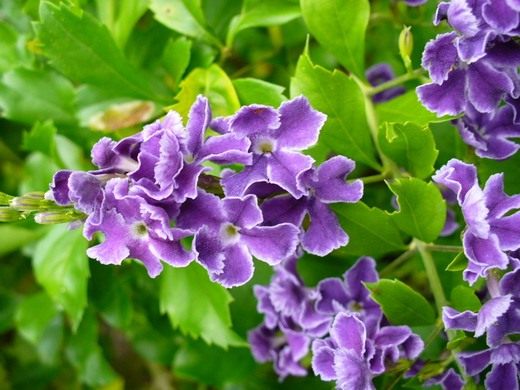

<>
Care and reproduction
Duranta belongs to shade-tolerant plants, however, it may not bloom in the shade.... Durant is placed on windows of western or eastern orientation, shading from direct sunlight. Variegated forms are grown in bright light. In summer and winter, duranta is watered equally sparingly. On hot days, the foliage of the plant is sprayed with soft water at room temperature. When spraying, be sure to make sure that water does not get on the flowers.
Durant is planted in a soil substrate composed of 2 parts of turf, 2 parts of leafy soil, 1 part of peat and 1 part of sand. The plant does not tolerate stagnant moisture at the roots, therefore, drainage from expanded clay is arranged at the bottom of the pot. An adult plant is transplanted no more than once every 2-3 years... This procedure is carried out in the spring. To increase the nutritional value of the soil, an annual change of the top layer of the coma will be sufficient.
Duranta is a cold-tolerant plant and does not tolerate high air temperatures... In summer, the plant needs a temperature of 15-18 ° C, in winter, 13-15 ° C. With a warmer content, the duranta bush may wither. The plant needs feeding only during the period of active growth and development. Liquid complex flower fertilizers are applied to the soil.
Duranta reproduces vegetatively. Young cuttings are cut in the spring and rooted in a loose nutritious substrate. To speed up the rooting process, a certain amount of growth stimulants is added to the water for irrigation.
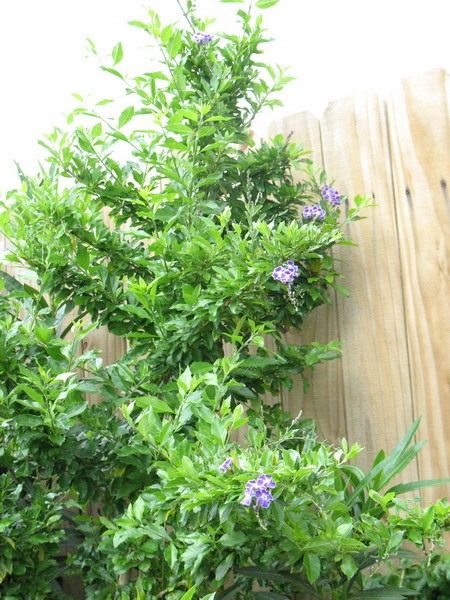

<>
Diseases and pests
Scabbards: brown plaques on the surface of leaves and stems, sucking out cell sap. Leaves and flowers lose color, dry and fall off.
Control measures. For mechanical cleaning of pests, the leaves are wiped with a soapy sponge. Then the plant should be sprayed with 0.15% actellic solution (1-2 ml per liter of water).
Aphids - Durants also sometimes infect. They damage the leaves on the underside, the tops of the shoots. The damaged parts are discolored, the leaves curl, turn yellow and fall off.
Control measures. Spraying with derris, phytoverm, decis, actellik, inta-vir. In case of severe damage, repeat the treatment.
Spider mite: appears when the air is too dry - a cobweb appears in the internodes on the stems, the leaves become lethargic and fall off.
Control measures. Wipe the plant with a soapy sponge and wash under a warm shower. Sprayed regularly. In case of a very severe lesion, the durant is sprayed with a 0.15% solution of actellik (1-2 ml per liter of water).
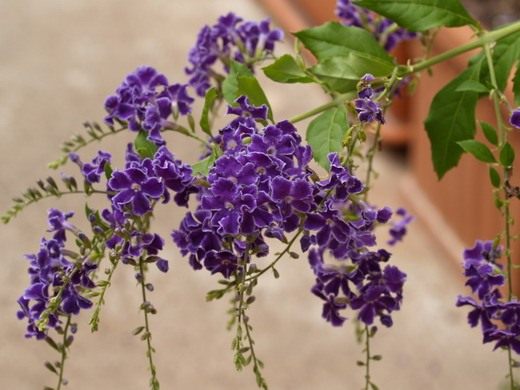

<>
Duranta and caring for her
Duranta plant is simple, unpretentious, but for some reason not particularly popular among amateur flower growers. But she can often be seen in the reception rooms of various public places and mid-range offices. In most cases, she lives there unidentified or under the popular name "Indoor birch", obtained due to the similarity of leaves with birch leaves.
A little about the plant
Durant belongs to the Verbenaceae family and came to us from the tropics of South America and is a small bush or tree. It is presented as decorative - deciduous plants, and flowering. But this division is not entirely correct. Almost any kind of durant can bloom. It's just that some of them do it very rarely and reluctantly. But there is nothing wrong with that. Such species are grown precisely because of the beauty of the leaves. There are a lot of species, varieties and hybrids of duranta. But among amateurs, the most famous and widespread:
- Duranta Plumier is a flowering plant. It usually grows as a miniature tree with beautiful green leaves and charming blooms. It blooms with lilac or blue flowers, collected in cluster-inflorescences. In the people it is better known as "Pigeon berry". In sentimental Europe it is called "Farewell Tear" and "Heavenly Flower". After flowering, fruits remain on it - yellowish "cherries". Duranta Plumier served as the basis for the creation of many hybrids, both flowering and decorative deciduous.
- Duranta Lorenza is a shrub that at home can reach a height of one and a half meters. In terms of decorativeness, it is somewhat inferior to plume. It has smaller and denser leaves. It blooms in small, usually white flowers. This type of durant also forms the basis of many hybrids.
Types of duranta


Duranta plumieri. It is this variety that is popularly called the "pigeon berry" or Duranta erecta. In natural conditions, it grows in a tree-like form and can reach up to 2–4 meters in height. Shoots have tetrahedral outlines. Leaf plates in shape can take on both ovoid and oblong outlines with a sharpness at the top. The edge is notched. The length of the sheet is measured 10 cm.
When blooming, numerous flowers are formed, however, their size is small, the color is purple or bluish. There is a longitudinal whitish stripe on the petal. From the flowers, the apical inflorescences are collected, containing several buds. When the flowering is very abundant, it seems that all the branches are completely decorated with flowers. When the fruits ripen, a berry appears with the size of a cherry and has a yellowish color. The diameter of the berry is 1.3 cm, just like the flowers are gathered in bunches.
This variety has garden varieties that are not suitable for indoor cultivation, but they look very decorative because of the spectacular color of foliage and flowers:
- Tricolor variety (Duranta erecta tricolor)
, can be found under the name Duranta Green and Gold - the plant has a golden tone on the leaf blade in the central part, while the edge of the leaf is green.
Variety Duranta variegated (Duranta variegata)
has a green core opposite, but a golden edging on the sheet.
Read also: Pine nuts for women: what vitamins are contained, how are they useful, who can be harmed
Grade Cuban gold (Duranta Cuban Gold)
has leafy plates with oval outlines and a greenish-yellowish color with an orange undertone, the shade is very reminiscent of a rich golden color scheme.
If the growing conditions allow, then it has a very abundant flowering. The natural variety has flower petals of a snow-white shade, but there are varieties with a lilac shade at the buds, and there is also a delicate pleasant aroma. When fruiting, an orange-colored berry ripens.
The most popular variety is White Cayenne Vanilla Bush - it has snow-white flower petals and a bright vanilla aroma.
Duranta creeping (Duranta repens) differs from previous varieties in that the shoots grow shorter and creeping.The leaf plates are small in size, the flowers, despite the small parameters, are quite spectacular. Can be used as a crop to form a bonsai tree.
What a durant looks like, see this video:
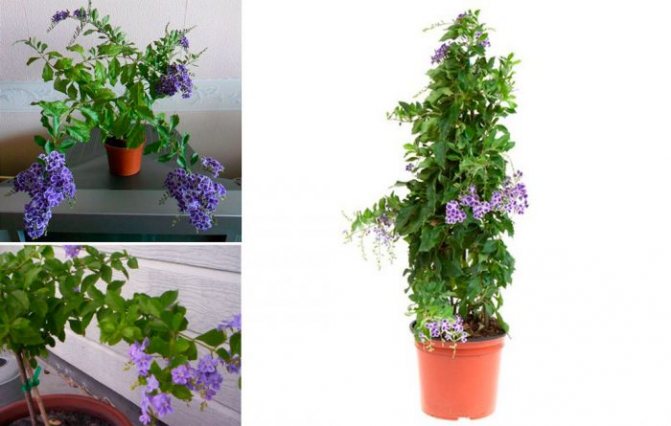

Duranta is an evergreen perennial ornamental flowering plant. Its woody stem is erect and strongly branching. It is also tetrahedral, and the thin bark is pale brown.
Small leaves, reaching a length of 3 to 5 centimeters, have the shape of a drop or an oval. They are shiny and pale green in color. This plant is also popularly called "room birch", as its leaves are very similar to birch. The petioles of the leaves are either very short or none at all.
Small pale blue flowers are collected in dangling, brush-shaped inflorescences. On monochromatic petals, as a rule, whitish lines are clearly visible. Duranta is suitable for composing compositions from various plants, and it also looks very impressive when grown alone.
Growing features
Temperature regime
Loves warmth. Moderate temperatures are recommended in winter. The temperature should not be allowed to be less than 16 degrees. If it is too warm, then the scabbard can settle. The room should be regularly ventilated, but the plant should be protected from cold drafts.
Illumination
You need a bright, but diffused light. It is recommended for placement to choose windows of western or eastern orientation. In the summer, it is best to take it outside, but you should gradually get used to the direct rays of the sun.
How to water
In the spring and summer, watering is plentiful, and in winter it is reduced to moderate. The substrate in the pot should be slightly moistened at all times.
Top dressing
It is necessary to feed the plant in the spring and summer. To do this, use a liquid complex fertilizer for indoor plants.
Organic fertilizers can also be used for feeding, for example, rotted cow dung. Top dressing is carried out in a special way. To do this, the top fifteen-centimeter layer of soil is carefully removed, and then several large spoons of fertilizer are poured into the pot. Try to distribute it on all sides next to the walls of the container. After that, the removed soil layer is returned back to the pot.
Humidity
High humidity required. Systematic spraying is recommended. In winter, the durant should be placed away from heating appliances. If the humidity is too low, then a scale insect or spider mite can settle on the plant.
Transplant features
Young specimens are transplanted once a year. Large plants are subjected to this procedure once every 2 years. A suitable soil mixture consists of leaf, turf and peat soil, humus, and sand, taken in a ratio of 2: 1: 1: 1: 1.
Breeding methods and care
This plant is quite shade-tolerant, but flowering may not occur in a shaded place. East or west windows are suitable for placement. Shading is required from direct rays of the sun. Species with variegated leaves should be placed in a well-lit place. Moderate watering is needed all year round. Spraying is carried out in extreme heat and for this use soft water at room temperature. When wetting the foliage, make sure that the liquid does not get on the flowers.
For planting, you can use a soil mixture consisting of leaf and sod land, sand, and also peat, taken in a ratio of 2: 2: 1: 1. Good drainage is necessary because the plant does not tolerate liquid stagnation in the soil. Adult specimens should be transplanted in spring no more than 1 time in 2 or 3 years. You can simply change the top layer of the substrate once a year.
This plant tolerates cold well and does not grow and develop well in heat.So, in the summer, it is recommended to keep the room cool (from 15 to 18 degrees), in the winter - it should be from 13 to 15 degrees. If the durant is in the heat, then it will begin to fade. Fertilize only during the period of intensive growth; for this, a liquid complex flower fertilizer is used.
You can propagate by cuttings. They are pruned in the spring and rooted in loose soil saturated with nutrients. In order for the stalk to give roots faster, you can add a little substance that stimulates growth to the water for irrigation.
Pests and diseases
- Scabbard - brownish plaques appear on shoots and leaves. Pests feed on plant sap. Flowers and foliage turn pale, dry up and completely die off. To destroy the scale insects, first, the plant must be washed with a sponge moistened in soapy water. After that, it is treated with a 0.15 percent solution of actellik (1 liter of water is taken for 1 or 2 milligrams of the drug).
- Spider mite - settles when humidity is too low. In internodes on the shoots, you can find a cobweb, the leaves wither and die off. To destroy pests, the plant is washed with soapy water with a sponge, and then they are given a warm shower. It is necessary in the future to systematically spray the durant. If there are a lot of spider mites, then you can treat the plant with a 0.15 percent solution of actellik (1 or 2 milligrams per 1 liter of water).
- Aphids - can also settle on this tree. It can be found on the seamy side of the leaves, as well as on young shoots. The leaves lose color, curl and die off. For destruction, it is necessary to treat the durant with phytoverm, actellik, derris, decis or inta-vir. If necessary, treat again after a few days.
Cultivation conditions for Duranta culture
- Lighting
... Duranta is a light-loving plant. It is recommended to place it on the south-east, south-west or south windows. Shading is not required, although during especially hot noon hours of a summer day, you should still think about this measure in order to avoid the appearance of burns on the leaves of duranta. After winter, the culture must be gradually taught to the sun. In the cold season, when the lighting is scarce, artificial illumination of exotics with phytolamps should be used. Then the flowering of the culture will be abundant, and the crown will be more magnificent. - Thermal conditions
... The optimum temperature for growing tropical shrubs is about + 20º. This is how it should be all year round. In summer, it is better to keep the durant outdoors: in the garden, on the balcony. Setting the temperature above + 25º can provoke foliage shedding. A comfortable winter temperature regime for a plant is within 16-13º. Temperature drops, durante drafts are contraindicated. - Air humidity
... It should be somewhat elevated, which is why it is recommended to regularly spray the foliage of the culture from a spray bottle with settled water at room temperature. This procedure should be done in the morning. Durant flowers must be protected from moisture on the petals. - Soil and container for planting
... The exotic pot is selected medium in size. Fill it with soil, consisting of 2 hours of leaf, 1 hour of sod land, 1 hour of humus, 1 hour of peat and 1 hour of river sand. Also, a ready-made substrate for flowering indoor flowers is suitable for planting a plant. Place a good drainage layer on the bottom of the pot.
Pruning duranta
Without regular pruning, you should not expect flowering, and even without formation, the bush looks sloppy. Duranta is an excellent material for embodying the fantasies of a florist; after pruning, she does not get sick and quickly recovers. The bush can be shaped to your liking, form an ampelous plant, a standard tree or a bonsai.
To carry out pruning, wear gloves (remember the poisonousness of the plant) and arm yourself with pruning shears (scissors may not cope with the shoots covered with bark).
In the spring, prune away weak, thin and diseased shoots. Prune healthy twigs if necessary (to form).
In summer, pinch drooping shoots through 2-3 internodes to stimulate lateral shoot growth. Remove faded brushes regularly. At the end of flowering, carry out a sanitary pruning: remove weak and broken shoots, old "bald" twigs, and those that thicken the bush.
DURANT PLANT - DESCRIPTION
Duranta erect
- This is a small (at home) shrub up to 1.5 m high.It has tetrahedral shoots, and the leaves can be either rounded or oblong with pointed ends, 3-7 cm long.
Flowers - small, blue or purple, collected at the ends of the shoots in drooping racemose inflorescences. Flowering occurs in early summer and lasts for several months.


Room durant
Of the whole variety of varieties at home, only a few of them are grown:
- duranta plumier or erect (Latin Duranta plumieri, Duranta erecta),
- duranta Lorentz or serrate-leaved (Latin Duranta lorentzii),
- creeping durant (Duranta repens).
Duranta Plumier (erect) is the most common indoor species. It is a highly branched shrub with large diamond-shaped leaves, smooth or raised along the edge. Under natural conditions, it reaches a height of three meters, at home - no more than one and a half meters. Blooming duranta Plumier is not very impressive, but in its own way it is very beautiful. Flowers of small size are collected in dense brushes, their color is pale blue, lilac or white. On the basis of this type, breeders obtain variegated varieties, valuable for the pattern on the leaf plate.


D. Plumier (erect)
The best varieties of upright durant:
- D. "Cuban Gold" (Cuban gold) - the elongated oval leaves of the plant are colored green-yellow with an orange tint. Their color scheme really resembles rich yellow gold.
- D. "Gold Edge" is a two-tone variety with a green leaf in the center and yellow at the edges. The shape of the leaf is oval, serrated at the edges.
- D. "Lemon Drop" - The leaves of this variety are also colored in two colors, but in the opposite order: a yellow center and a rich green bright edge.
- D. "Geisha Girl" (Little Geisha) - beautifully flowering durant. Bright purple flowers, collected in dense inflorescences, have a white wavy border and pith.


Sorts Cuban Gold, Gold Land, Little Geisha
Duranta Lorenza is a shrub with dense shoots and small leaves, carved at the edges. The color of the flowers can vary from deep purple to white.
Duranta creeping is a dwarf species with short shoots and small leaves. Flowers, despite their small size, are very decorative and showy.
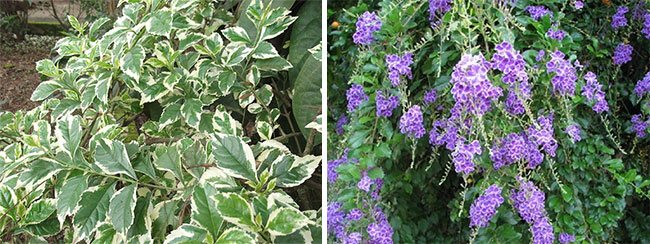

D. creeping
Origin and appearance of duranta
Duranta is a representative of the Verbenov plant family. Its homeland is the South American tropics, some species (there are more than 30) grow in the Indian jungle. Under natural conditions, durants are shrubs and small (no higher than 5 meters) trees.


Daranta inflorescence brushes - one of the exquisite decorations of the tropical jungle
Not the most beautiful, from the point of view of a Russian, the name of the plant is the memory of the Italian scientist Castor Duranta. In Russia, the flower is sometimes called a room birch (for the similarity of leaves) or a pigeon berry (possibly because of the bluish color of the flowers). Abroad, duranta is poetically called a heavenly flower and a farewell tear.
A perennial durant plant is grown as a garden plant in the south, and in the northern latitudes it has become an indoor plant. This is a bush with many branches or a miniature tree, it depends on the formation. Over time, the shoots are covered with a light bark and acquire a four-sided shape, and the young ones droop, forming a kind of arch. Some varieties have not very sharp thorns on the branches.Durant leaves are small (5–7 cm), hardish, serrated along the edge, like in birch, shiny, bright green or with white and yellow markings in variegated forms. Variegated plants are very original.


Durants with variegated leaves are difficult to make bloom, but they are great without it.
But the most beautiful thing about durant is the clusters of inflorescences. At the end of young drooping shoots, whole brushes of bluish, lilac, blue, purple, white or two-colored buds appear. The flowers of the duranta are medium-sized, five petals each, and the shape vaguely resembles viola (pansies). Bunches of flowers of dark shades with a white border are especially good.


Each durant flower is simple, but collected in a brush, they are very picturesque
Some varieties are fragrant. Their scent has been compared to that of vanilla or irises. They usually bloom from late spring to autumn. With good care, the durant can bloom for six months or longer. If the plant is pollinated, bright orange clusters of rounded, cherry-like fruits will appear.
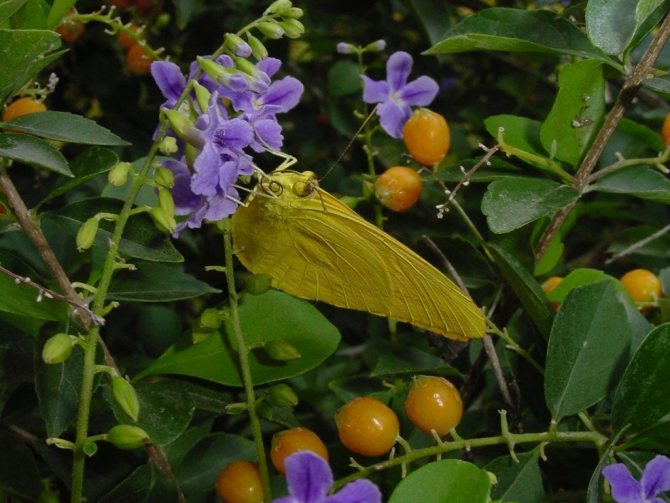

The pleasant aroma of duranta flowers attracts butterflies, and after pollination, yellow "cherries" of fruits are tied
You have to be more careful with the beautiful durant. Its bright fruits and the rest of the plant contain poison. Therefore, when keeping a flower at home, take care of the safety of small children and pets. Place the plant out of their reach. When working with durant, wear gloves, and then wash your hands well.
Duranta is not demanding on home conditions and care. Like most of her tropical countrymen, she prefers bright light, moderate warmth and high humidity. These wishes are easy to fulfill, especially if there are other plants at home with the same habits.
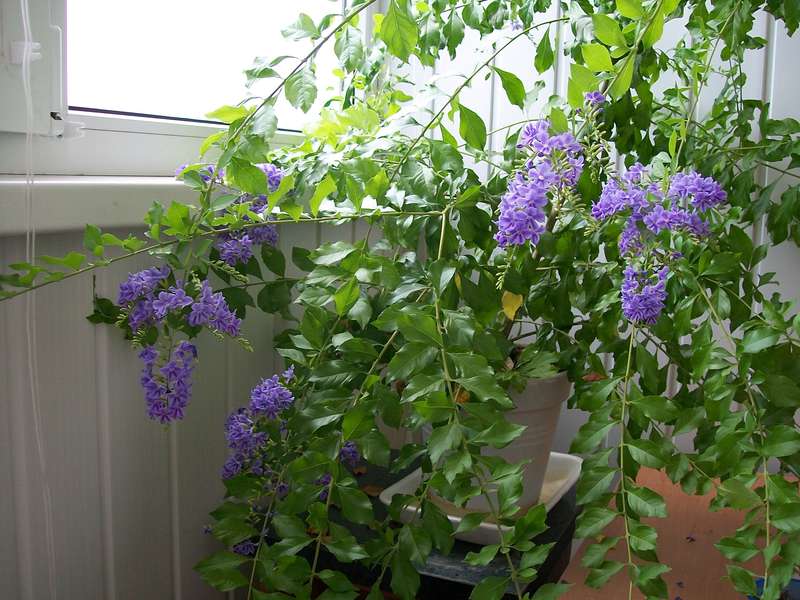

Durante needs ample room to grow
Duranta bush will be an excellent component of a flower arrangement. But it looks even better as a single plant. An adult specimen can reach a height of one and a half to two meters. During the spring and summer, the duranta gives abundant growth. Therefore, its spreading twigs need a lot of space for development. You can grow a standard tree.
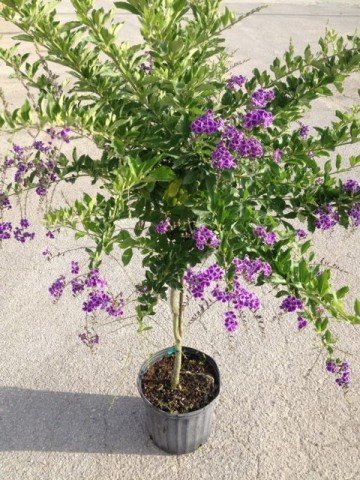

You can form a bush from durant, or you can leave one trunk and grow a standard tree
And miniature varieties grow as ampelous, and sometimes bonsai are formed from them.
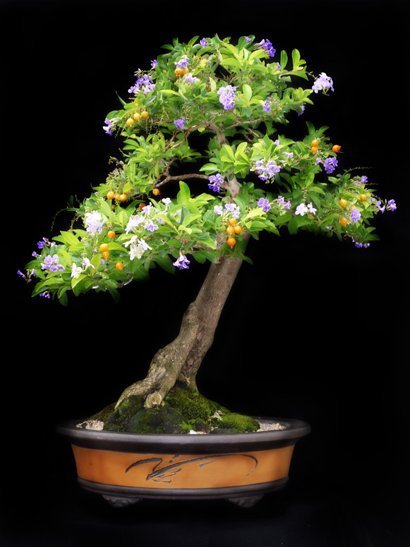

Duranta is a very flexible plant that makes charming bonsai trees.
Plume, variegated, lorenza and others
In durant, flower growers are attracted not only by the beauty of flower brushes, but also by the leaves. Along with flowering varieties with a green crown, variegated ones are cultivated at home: golden or white-green. According to some classifications, the durant is even classified as decorative leafy indoor plants. Amateurs note that it is much more difficult to achieve flowering from a motley durant. Let's get acquainted with the most common species and varieties.
- Duranta plume (upright) is most often grown indoors. But there are garden varieties. This is a tree or bush 1.5-2 meters in height when growing at home, up to 5 m in the wild. Stems and woody branches are tetrahedral. Leaves are oval from 5 to 10 cm with a pointed end and uneven teeth along the edges. Small flowers, pale blue or lilac, are collected in clusters. The flowering is profuse and long lasting. After that, fruits are formed, like yellow cherries. Variegated hybrid varieties have been developed on the basis of duranta plumier. They are often grown not for flowering, but because of their decorative foliage.
- Duranta variegated - a hybrid with white-creamy-green leaves and bluish flowers.
- Green and Gold or tricolor, this variety has variegated leaves yellow in the center, and pale green on the edge. The flowers are blue in color, smell very good and are collected in beautiful clusters at the ends of the shoots.
- Cuban Gold - a hybrid of elliptical leaves, they are green-yellow with a reddish-orange sheen like gold.
- Gold Edge is a plant with oval toothed leaves with a green center and a bright yellow edge.
- Lemon Drop, this variety has a lemon-yellow center of leaves and bright green edges.
- Duranta Sweet Memory is a hybrid with green leaves, blue-violet flowers and a white corrugated border. The aroma is chocolate-candy.
- Alba margarita is a plume variety that is distinguished by its white flowers.
- Duranta Lorenza is a shrub that grows up to one and a half meters. Shoots are tetrahedral. The leaves are denser than those of the plume, oval-pointed with split edges. It blooms willingly with good maintenance. Flowers are often white, small. The berries are orange. Under indoor conditions, hybrid varieties are grown based on the Lorenz durant.
- Geisha Girl (Little Geisha) is a hybrid with beautiful flowers. They have a rich purple petal color, white center and wavy edge.
- White Cayenne Vanilla Bush is a variety with snow-white buds with a strong vanilla aroma.
Types and varieties of flowers in the photo: blue, white, blue and others
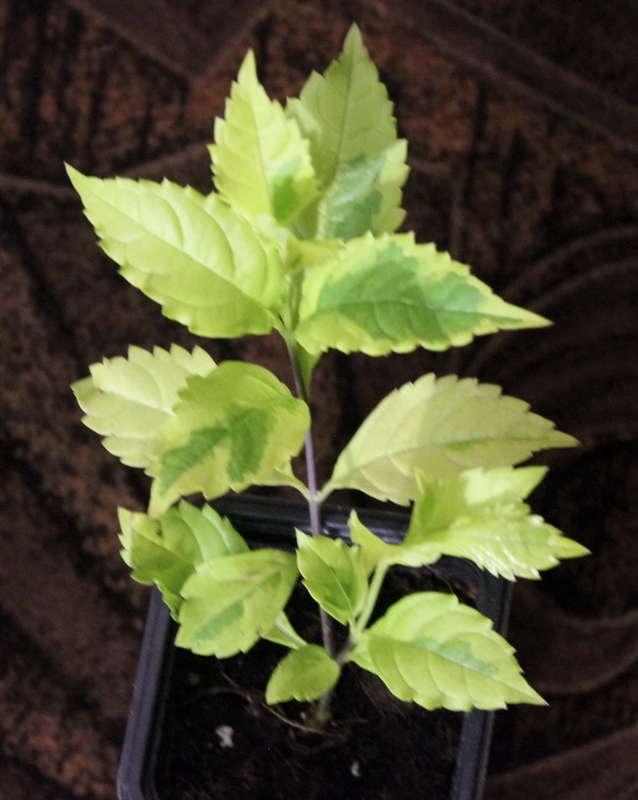

Gold Edge, the middle of the leaf is green and the edge is bright yellow


Geisha Girl (Little Geisha) - hybrid with purple flowers
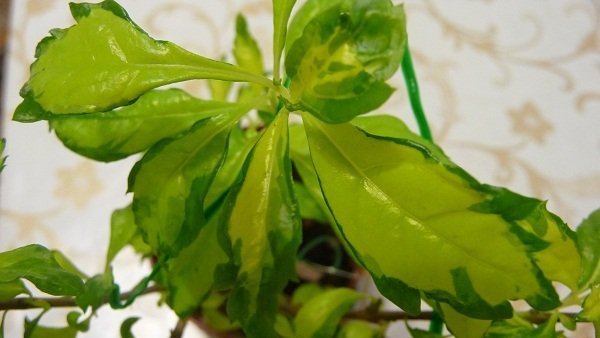

Green and Gold (tricolor), variegated leaves are yellow in the center, and pale green on the edge


Lemon Drop, lemon yellow center of leaves and bright green edges
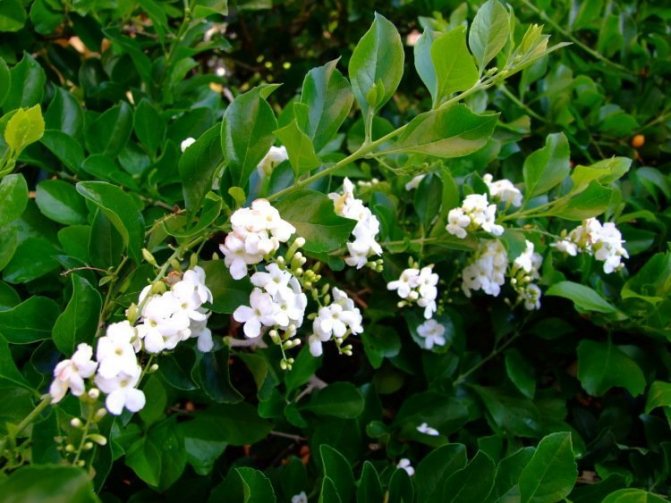

White Cayenne Vanilla Bush - snow-white inflorescences with a strong vanilla aroma
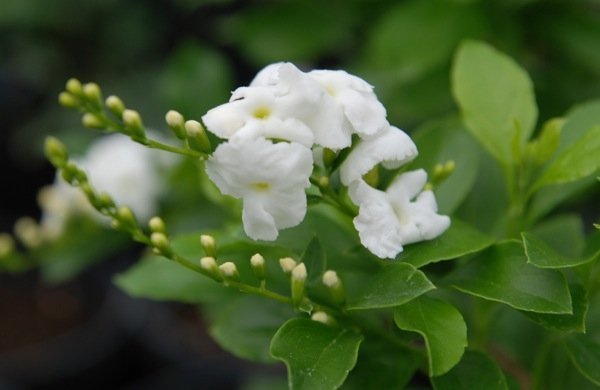

Alba margarita - a variety of plume with white flowers
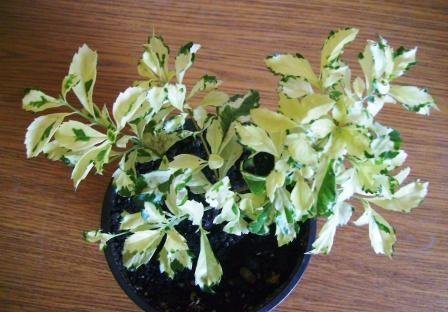

Duranta variegated with white-creamy-green leaves
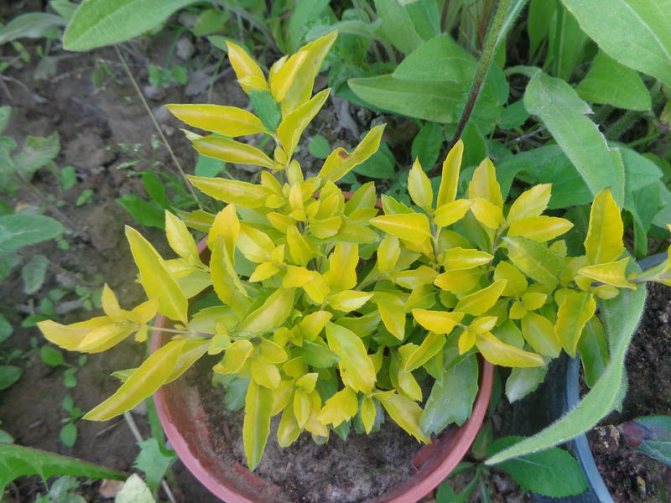

Cuban Gold (Cuban gold) - hybrid with golden yellow leaves


Durant of Lorenz has tougher leaves
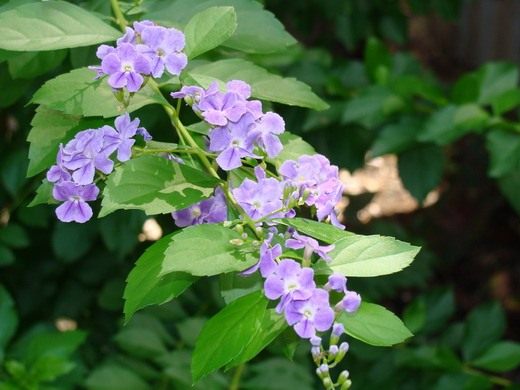

Duranta plume is often grown indoors
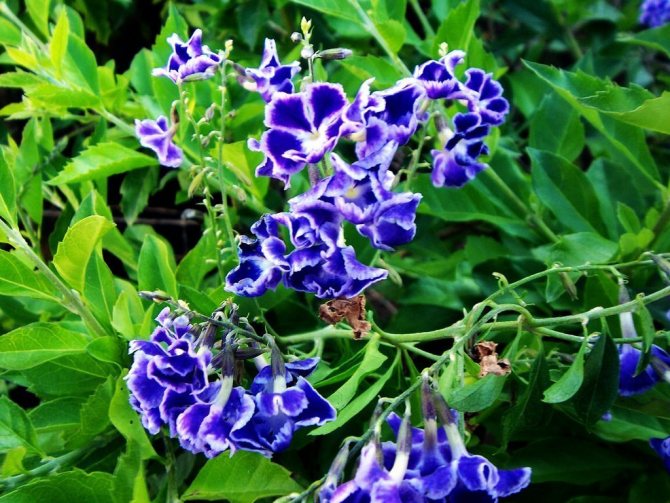

Duranta Sweet Memory - hybrid with green leaves and blue-violet flowers with a white border
Video: flowering durants and fruits
Features for caring for a flower at home
These indoor plant species love warmth. They must be kept at a temperature of at least +16 ° C. But avoid direct sunlight, the durant does not like them. In the warm season, when taking care of, open the windows; the plant needs open air. It should be remembered that drafts are unacceptable.
It is worth watering more often on hot summer days than in winter. Watch the soil, it should not be dry. Often the owners of this flower make mistakes when leaving. The most common is that when spraying the leaves, water often hits the flowers. You don't need to do this. Also, spray the plant in the morning or evening to avoid sunburn. In order for the plant to bloom, it needs to be looked after, they also feel our attitude towards them.
The soil into which you will transplant the plant is very simple to prepare. Take 1 part of humus, sand, turf soil and 2 parts of leaf. It is worth replanting a young plant every year in the spring. Large representatives are transplanted less often, once every 2 years. As for fertilization, top dressing should be done in spring and summer.
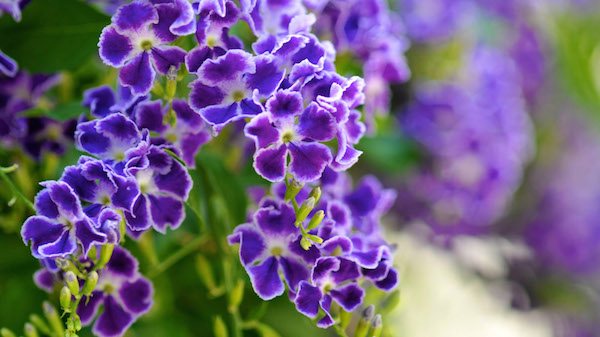

Growing and care
Location, lighting and temperature
Loves sunlight and fresh air, but not in direct sunlight, and drafts. An excellent solution would be an east or west window sill. A south side is also acceptable, provided it is shaded at noon. The northern direction is not suitable: the lack of ultraviolet radiation negatively affects the decorative effect. Flowering requires 10-12 hour daylight hours.
From autumn to spring, fluorescent lighting is required. Owners can arrange "summer vacations" and bring a farewell tear to the glassed-in balcony. But such a space requires gradual getting used to. This helps to reduce the negative effects of the heat during hot days. Otherwise, partial fall of foliage is possible. Sometimes a seedling is grown in the back of the room, while sacrificing flowering.
Refers to thermophilic "creatures". But he does not tolerate hot days. A moderate temperature is best suited: +20. But depending on the season, the pigeon berry adapts to different microclimate. Preferred indicators: in winter 15-16, and in summer duranta can withstand up to +26, if the requirements for humidity and air circulation are met.
If you keep the container in a room with a high temperature from December to March, then the plant becomes an easy prey for many pests.
Humidity and watering
Is experiencing the need for slightly increased humidity... It is necessary to strive for 65-75%. Systematic spraying of the crown will help in this. This should be done in the early morning with purified water at room temperature. With the onset of flowering, the owners avoid contact of the buds with liquid. Delicate petals fade from exposure to drops. From this moment, a pallet with expanded clay is used, which is installed next to the container.
Watering is required abundant and regular, regardless of the season. But stagnation of water is unacceptable. This can be very harmful. The soil should be slightly moistened, without "swamp". There is no specific schedule. Watering occurs as the top layer of the soil dries up. But it should not be completely drained. Experienced gardeners are advised to touch the soil with your finger to check if the time has come for moisturizing. If there is dirt on it, then the "drink" is put aside. Winter and summer watering is different.
With the onset of cold weather, it occurs on average every 2 weeks. From March to October - every 3-5 days. It is important to keep the leaves clean, but due to their small size, dusting them by hand is long and tedious. Covering a pot of soil with a foil (to avoid soil erosion and stagnation of moisture), an summer shower is arranged for the pigeon berries.
We select a suitable pot


A medium-sized container is selected from natural materials. Highly air and water circulation is important... For the same purpose, there should be through drainage holes in the flowerpot.
Soil and fertilizers
It is able to fully develop only in an acidic environment. A ready-made substrate for flowering pets is purchased in the market. It is prepared with its own hand from the following components:
- sod and leafy soil;
- sand, in equal proportions.
Mix everything thoroughly and add 1 share of humus, turf soil, peat. For looseness, river sand is introduced.
A period of active growth is impossible without additional nutrition. From March to October, complexes for flowering indoor crops are introduced. Concentrate can be purchased. Breeding is carried out strictly according to the instructions. From mid-autumn to the end of winter, feeding is not required.
Flower pruning
A fast-growing "birch" can stretch out and lose its visual appeal. Before the onset of the growing season, maximum molding is carried out. It inhibits explosive growth. Due to this, the bushiness will become much larger, and the dimensions of the crown will be more compact.
For the splendor of the bush, systematic pinching is also used. Its disadvantage is flowering delay. Low-growing species grow like ampelous, but bonsai can be formed from them.
Diseases and pests
The shrub is resistant to diseases of various origins. An indoor plant can only get sick with significant violations of the conditions of maintenance and care.
Possible pests are spider mites, aphids, scale insects. First aid for small houseplants is a warm shower. The water temperature is 40-45 degrees. Plants are abundantly moistened, after which the leaves are wiped with cotton swabs with an alcohol-containing component. Large crops can be rescued by treatment with special insecticides. The preparations "Actellik" and "Fitoverm" have proven themselves well.
Difficulties in growing a plant and ways to solve them
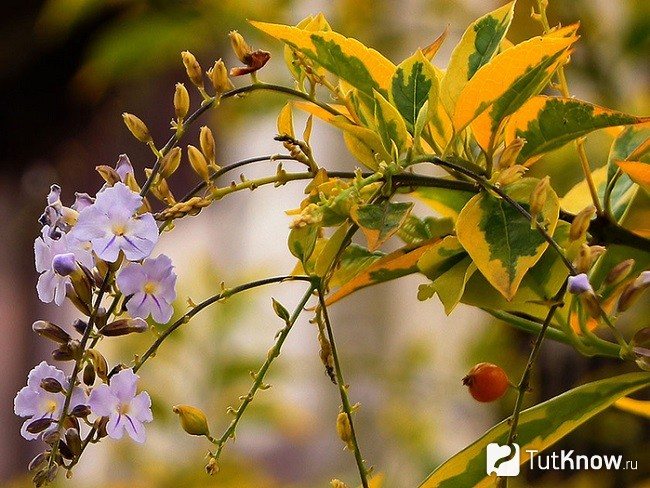

More significant damage to the durant can be caused by scale insects, aphids and spider mites. If harmful insects are detected, it is necessary to process the foliage with soap, oil or alcohol preparations. If these funds are of little help, then the "indoor birch" is sprayed with insecticidal preparations (for example, Aktellik, Fitover or Aktara).
If we talk about diseases, then only if the conditions of detention are violated, they infect the plant.So when the soil becomes acidic due to excessive watering, rotting of the root system can begin. In this case, the durant must be removed from the pot, the affected root areas must be cut off with a disinfected knife, treated with a fungicidal preparation and planted in a new pot with steamed substrate. In the future, the watering mode needs to be adjusted.
If the "indoor birch" is in direct sunlight, then the color of its leaves will fade, and burns may appear on them.
Duranta we grow at home a flowering tree or bush
A plant with a not very euphonious name for the Russian language - duranta - is still a rare tenant in our homes. She just started to gain popularity and her fans. But the one who had already started this flower (its cuttings are often brought from tropical countries), fell in love with it seriously and for a long time. Here is one of the reviews: "Durant should be safely attributed to the most beautiful, unpretentious and grateful plants." This bush has wonderful and fragrant flowers and beautiful foliage. And this is all when taking care at home. So, if you hear an unreasonable name - duranta, do not pass by. This flower confirms the saying: it is not the name that colors the plant.
Interesting facts about Durant


It is important to remember that due to the high content of a substance such as saponin, leaf plates and berries are poisonous. It is recommended to keep the plant out of reach of small children and pets, which may be attracted by the color of flowers and duranta fruits. If swallowed, hives or even poisoning may occur.
Often, if conditions permitting the growth in the open air, hedges are formed from shrub or low tree-like representatives.
Diseases and pests
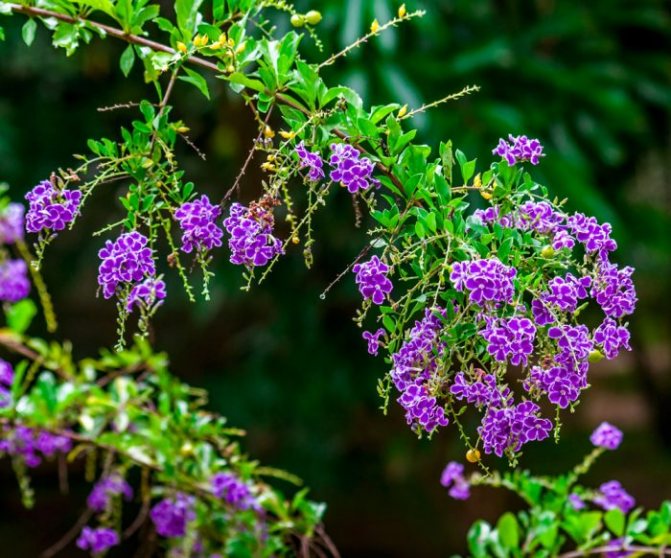

The durant plant is highly resistant to both pests and diseases. However, with improper care, such as excessively low air temperatures or too much watering, rot can appear on the roots. And if the air in the room is excessively dry, pests can settle on the bush.
Even if you care for the plant correctly, you still need to know what pests can settle on it:
- Aphid. If the color of the foliage has faded, and it itself twists and dries, this means that aphids have settled on the bush. Carefully inspect the seamy surface of the sheet plates, this is where this pest prefers to hide. To get rid of it, treat the plant with a solution of an insecticidal preparation, for example: Fitoverma or Derris.
- Shield. Such an insect actively sucks the plant sap from the foliage, because of which it dies. If brownish small specks, as well as sticky liquid, appear on the bush, most likely, scale insects have settled on it. To get rid of the pest, the bush is treated with Actellik's solution or its leaves are thoroughly washed with a soap solution.
- Whitefly. Because of this insect, the leaf plates turn yellow and die off. It settles on the underside of the foliage and sucks the juice out of it. To get rid of it, it will take several treatments of the bush with a solution of the Admiral or Kinmix.
- Spider mite. Withering and flying foliage is a sure sign of the presence of a spider mite. If there are a lot of pests, then the finest cobwebs can be found on the shoots and leaves. To get rid of them, arrange a shower for the bush and spray it with Decis or a preparation of a similar action.
Also, sometimes rot may appear on the root system, which causes foliage to fly around. Due to rot, the bush may die. At the first signs of root rot, the bush must be urgently transplanted. Remove it from the pot and remove all the substrate from the roots, and then cut out all problem areas and treat the root system with an antiseptic. Then plant the duranta in a new container and fresh soil mixture.
Why Duranta Doesn't Blossom
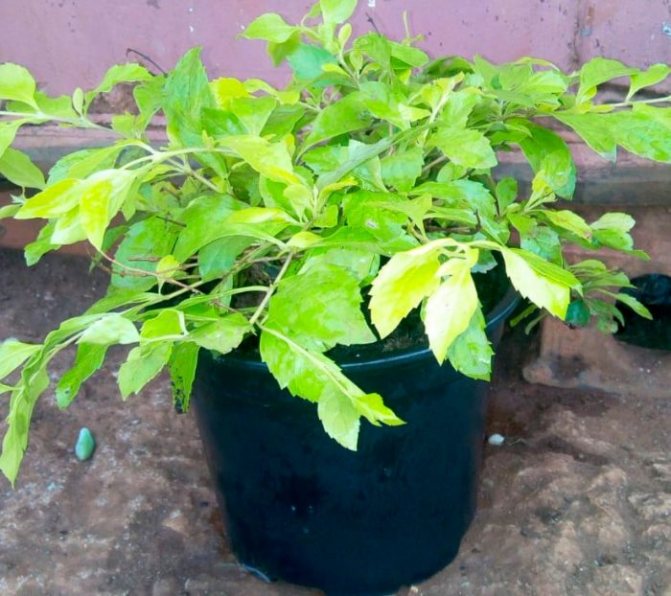

For lush and long flowering duranta, it must be in a cool place in winter. Bush pruning is carried out only in the autumn at the end of flowering
It is also very important to choose a well-lit place for it. When transplanting, the new pot should only be slightly larger than the old one, otherwise the roots will be too spacious and the bush may not bloom at all
If you follow all these simple rules, then the shrub will bloom regularly, luxuriantly and for a long time.
Duranta sheds leaves
In autumn or winter, duranta can shed some of the leaves, which is considered a completely natural process. But if the foliage begins to fly around during the active growth of the plant or flowering, then this may be due to decay of the roots or the presence of pests. By identifying the cause and eliminating it, you will save the plant, and its foliage will soon become lush and spectacular again.
Pests and diseases - treatment and prevention
Spider mite, whitefly, scale insect
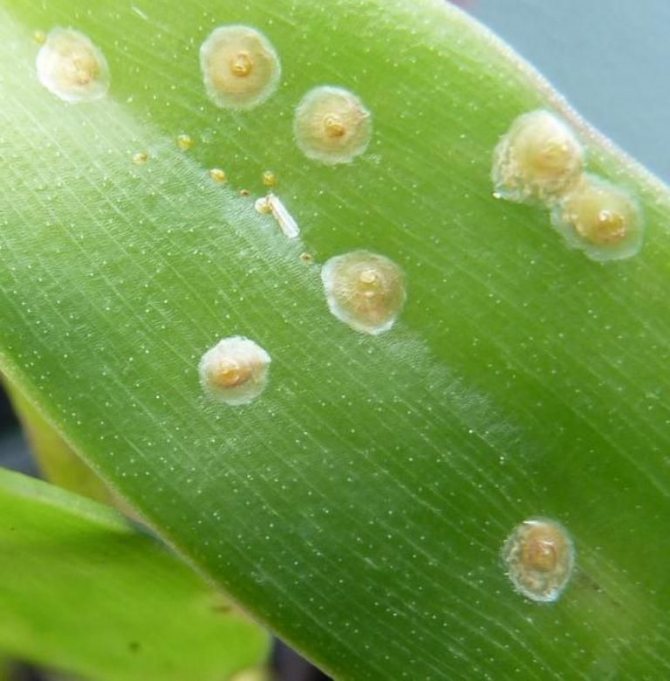

The shield is a rather dangerous pest, if detected, take urgent measures to destroy it
All uninvited guests appear due to neglect of the rules of care. Too dry air, insufficient watering and infrequent spraying lead to bad consequences. If you do not respond in time to the colonization of pests, then the exotic can even die. It is not difficult to fight with a small number. To do this, moisten a napkin in a solution of soapy water and wipe the leaves. The procedure is repeated until complete victory over insects.
If the case is neglected, then only a special chemical agent - an insecticide - can correct the situation. As a preventive measure, an infusion of onion peels is used. It also gives shine to the leaves.
Loss of decorativeness
Small leaves, loss of pattern (for variegated species), elongation of stems and poor flowering - all these are “signals” of durant about lack of sunlight. Twisting the tops and drying tips of the leaves - "ask" for additional watering and spraying. Elongated pale stems are a sign of a lack of dressing.
When the proper grooming is resumed, the healthy appearance will return.
Propagation of durants by cuttings


How to cut a photo of a sapling from a cuttings durant
At home, duranta is propagated mainly by cuttings. You can start rooting cuttings in the spring, but it is better to do this after the end of flowering (in autumn).
- Cut the top cuttings from semi-lignified shoots.
- Use a sharp, sanitized knife.
- The length of the cutting should be 10-12 cm.
- Keep the cuttings in a growth stimulant solution for a day (heteroacusin, root).
- Root in a mixture of peat and sand (sand can be replaced with vermiculite), cooked in equal proportions. We fill up the substrate in a container, moisten the soil, plant the cuttings and cover with a film or glass on top. You can cover each stalk with a glass jar or cut-off plastic bottle. Place in a warm place (about 25 ° C, ideally use underfloor heating) with diffused lighting. Ventilate daily, water as needed. Under such conditions, the cuttings will take root after 3-4 weeks, as evidenced by the appearance of new leaves. Plant young plants in separate containers. The first bloom will come in the second year of growth.
Reproduction
New durants can be grown from cuttings and seeds. When cuttings, the variegated color of the leaves is not always preserved. Therefore, variegated varieties are best obtained by seed propagation.
Cuttings
The most suitable time for propagation by cuttings is autumn, when the duranta has already faded. Its branches are still full of vitality and are easy to root. But you can do cuttings in the spring.
- Cut the cuttings - the tops of the semi-lignified shoots with a sharp and clean knife.
- Dip the cuttings into the growth stimulator solution for a few seconds.
- Prepare the rooting substrate: equal peat with sand or perlite. Sterilize it.
- Pour the substrate into the greenhouse. Ideally, it should be bottom heated.
- Plant the cuttings in a moistened substrate, spray with warm water and cover with a lid or transparent, moisture-proof material.
- Place in a warm (25 degrees) and bright, but without direct sun, place.
- Moisten and ventilate plantings.
- After about 3-4 weeks, the cuttings should give roots.
- After the appearance of new leaves, transplant the seedlings into separate containers.
- Young durants grown from cuttings will bloom in the second year.
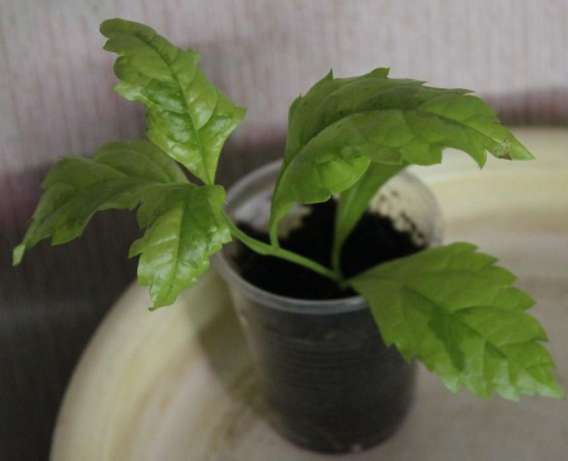

Cutting is the easiest and most effective way to reproduce duranta
Seeds
Seeds of the still exotic durant are not so easy to find, but they can be purchased in online stores. They cost from 20 to 100 rubles per seed. The sowing campaign for duranta begins in late winter or early spring.
- Wrap the seeds in a cloth and place them in a biostimulant solution (Epin, Zircon) for 24 hours.
- Pour a light substrate (peat and sand, moss and peat) into the greenhouse (it is good if there is bottom heating).
- Embed the seeds by 0.5-1 cm, moisten the crops.
- Cover the greenhouse with a lid or transparent, moisture-proof material.
- Place in a bright place. For germination, provide a temperature of +25 degrees.
- Moisten the substrate as needed.
- The first shoots should appear in one and a half to two months.
- When the first true leaves unfold on the seedlings, transplant them into separate containers.
- Young durants will bloom no earlier than 3 years later.
Duranta is a plant that is beautiful in appearance and not capricious in care, but undeservedly deprived of the attention of flower growers. For those who are not closely acquainted with her, it does not occur to them that such a blossoming miracle is hidden behind an unassuming name. True, the movement of durantophiles in our country is growing and gaining strength. This flower, they believe, is like Russia, cannot be understood with the mind. One must believe in a durant. And also give her a lot of light, a cramped pot, high-quality food, a cool winter and warmth, airy and soulful, at other times of the year. And then the duranta will turn golden and green with beautiful foliage and bloom with wonderful heavenly flowers.
Watering durants
Duranta loves moisture very much, however, the frequency of watering will depend on the season. In the warm season, the plant should be watered once every four days, and in the cold season - once a week. The need for moisture should be determined by how wet the soil is. If it is half dry, then the shrub needs watering.
You should also take care of air humidity. This parameter is equally important for a tropical inhabitant. You can increase the humidity either by spraying the foliage of the plant, or using a household humidifier.
In the cold season, humidity should be reduced to avoid diseases that can be caused by excess moisture. Also in winter, it is necessary to keep the durant away from heating devices so as not to dry out the soil and not harm the shrubbery.
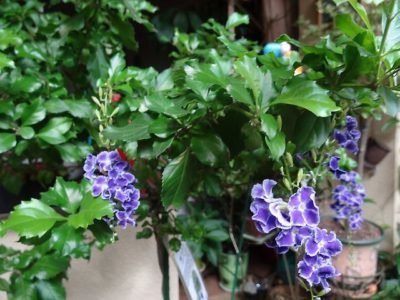

Florist reviews
This charming shrub captivates at first sight. Delicate green leaves with a carved jagged edge. Strongly branched crown, symmetrically arranged branches on the trunk and on the skeletal branches. It is a pleasure to form Duranta, you can use a bush, you can use a tree. It tolerates pruning quite calmly. Blooms on new growth, shoots of the current year. At the very ends, thin arrows are thrown out, completely decorated with blue flowers, very similar to pansies, only smaller in diameter.
Irina Kiyek
This plant is familiar from childhood, earlier it was called simply "home birch". It could be found in every pharmacy or post office (where else can large plants be attributed). Now, in my opinion, this forgotten plant is rarely found.For a long time I could not identify it from the reference books, but just in case, I got hold of a process and for 3 years conscientiously raised it on a trunk. And recently I decided to conduct an audit on the windows and give away not my favorite plants. I gave it away. And yesterday I found out the name, description, etc. It turns out that there is some kind of beauty, and even blooms with blue flowers! You have to carry all sorts of things into the house, but you can't see it under your nose! From the series “The Amazing is Nearby”.
LEDI-M
I have been growing a durant for 3 years. In spring, extended branches have to be cut strongly. It stood both on the southeastern window sill and on the northwestern one, in the summer it was carried out into the fresh air. It never bloomed: ((Maybe it doesn't need to be cut off for flowering ... Or maybe it should reach a certain age ... So I didn't understand.
Rhea
Duranta - an exotic plant with graceful inflorescences of a blue-blue scale - wins the hearts of flower growers. In just one season, the shrub is able to stretch to a significant size, moreover, it blooms continuously for six months. Caring for the plant is simple, and subject to proper lighting, humidity and temperature conditions, the "heavenly flower" will certainly delight the owners with its flowering. However, care should be taken: the leaves and berries of duranta are poisonous.
Why Duranta does not bloom and how to make it bloom


Duranta blue home care photo
In home floriculture, durant is not widespread and not everyone manages to immediately adapt to the nature of the plant. The most common problem is the lack of flowering. The owners of variegated forms of duranta are surprised that the culture belongs to the flowering ones. Variegated varieties bloom very rarely and poorly, their main decoration is leaves. "Green" durants can and should bloom. Each inflorescence lasts about 10 days, after a while the plant releases a new one, in general, the flowering period lasts about six months.
At the forum, one happy mistress of a lush duranta shared her cultivation experience. A place for the plant was set aside on the south window and the duranta bloomed at the end of winter. The withered brushes were cut off. In the summer, the plant was taken out into the garden for fresh air and flowering continued. During the flowering period, they were fed 5-6 times with mineral fertilizers for flowering plants. When the plant was returned to the room and placed on the eastern window sill, the duranta did not bloom next spring. Don't forget about constant good lighting.
There is one more successful experience:
- Durant wintering took place at a temperature of 15-16 ° C.
- In the summer, she was moved to an open east-facing balcony, where the sun shone from early morning until noon.
- The hostess does not grow large-sized plants to save space, so she cuttings duranta in February. And to stimulate tillering, you need to cut off the shoots strongly.
- From spring, it should be fed with fertilizers for flowering crops, in the heat it should be watered abundantly.
- As a result, we get young regularly flowering plants, and the clusters of inflorescences appear all summer at short intervals. Just be sure to cut off wilted inflorescences.
So, measures to ensure regular flowering:
- Lighting should be bright throughout the year;
- Inflorescences appear on young shoots of the current year. In early spring, before the start of growth activation, be sure to prune;
- Cool wintering;
- Feed the durant with fertilizers for decorative flowering crops;
- Also grow the plant in a slightly cramped container.
Features of duranta
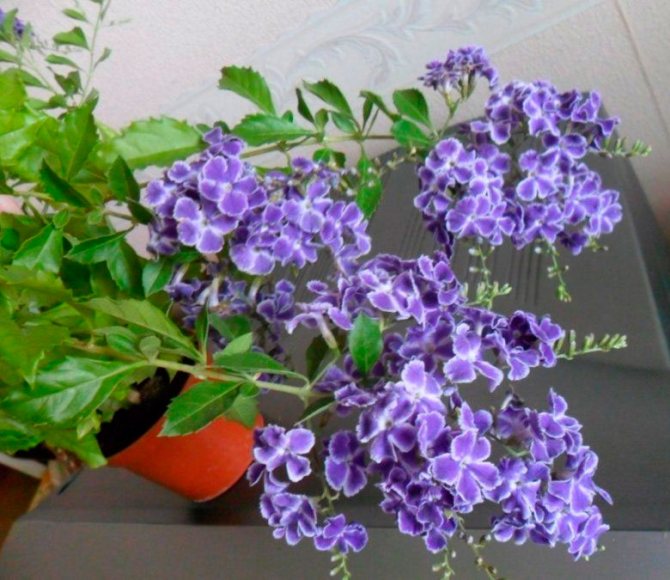

Not so long ago, such an exotic plant as duranta was widely cultivated in indoor conditions. Today, some growers are also engaged in its cultivation, but still the plant is no longer popular. Duranta is a subspecies of flowering shrubs that are perennials. It is considered part of the Verbenaceae family. This subspecies includes about 22 different species.This exotic plant was named duranta in honor of the Italian scientist K. Durante. This shrub also has popular names, for example, "pigeon berry" or "indoor birch". In some countries, durant is also called "heavenly flower" or "farewell tear".
The most important advantage of this exotic, for which flower growers appreciate it, is its spectacular flowering. Its beautiful flowers can be colored lilac, dark purple, blue or white. There are also varieties in which the center of the purple flower is white, and along the edge of the petals there is a border of the same shade. Flowers are part of long racemose inflorescences. At the end of flowering, deep orange berry-like fruits are formed on the bush. The foliage of such a plant also looks quite impressive. As a rule, it is colored dark green, but it can also be variegated. There are notches on the edge of the sheet plates. This shrub is characterized by strong branching, and its branches are spreading.
Before decorating your home with duranta, keep in mind that it contains a very strong poison! It is grown at home as a shrub with spreading stems. From a creeping species, durants often form a miniature bonsai. Under natural conditions, this plant can be found in South America. It is cultivated both indoors and outdoors (in the garden).
Soil for duranta
The soil for normal growth and development of the plant must be loose, breathable, nutritious and have neutral acidity. For planting a plant, you can use a neutral soil with the addition of coarse sand.
To prepare the substrate yourself, you should take sand, leaf and sod soil in equal proportions. Then add small amounts of perlite, peat and vermiculite.
You also need to take care of drainage, which can be used as brick chips and expanded clay. The drainage layer should occupy a quarter of the flower pot.
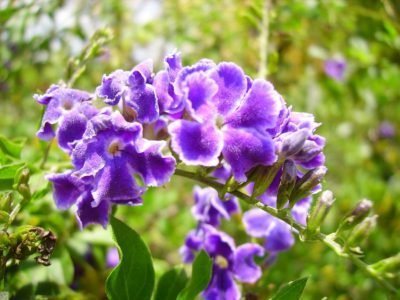

Why duranta does not bloom
In order for the plant to bloom and delight its owners, it should be kept cool during the dormant period. Prune the plant only in the fall, when it has already faded. Place the shrub in a well-lit area.
Plant it in a cramped pot, making sure that the soil is not in excess, since excess soil can interfere with the flowering of the duranta. All these factors cause the plant to stop blooming.
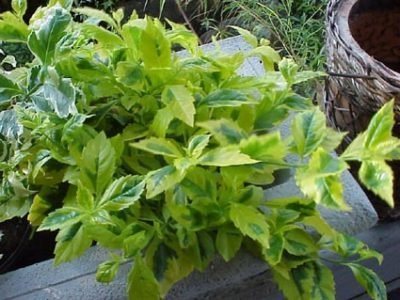

Duranta after winter
With the beginning of spring, the plant should increase the air humidity to 70% and watering, bringing it up to twice a week. However, in this case, you need to monitor the soil and water the durant only when the soil is half dry.
Also, during the growing season, the plant should provide a sufficient amount of sunlight and correct the temperature regime, which should be about 20 degrees.
A shrub growing in open ground must be freed from the protective cover, loosened up the soil, check the condition of the branches and, if necessary, apply additional fertilizing.
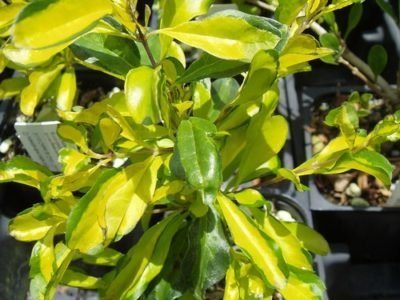

Room care rules
This culture belongs to tropical plants, therefore, when caring for durante at home, it is necessary to create an environment close to natural. For this, flower growers perform a number of activities:
- watering;
- top dressing;
- pruning;
- transplant.
Planting and growing chokeberry, picking fruits
Watering and feeding
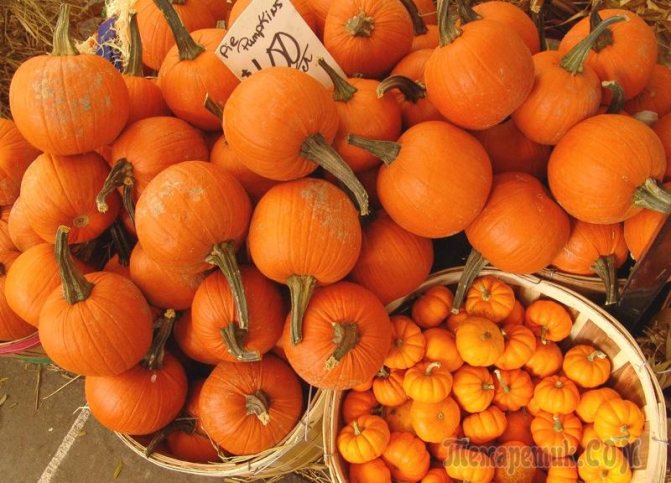

The flower is a moisture-loving plant, so it is watered abundantly at any time of the year. They constantly monitor the condition of the soil. It should always be slightly damp. It is not recommended to dry it too much. But too damp soil can also lead to root rot. In the summer, the plant is watered every other day with warm and settled water. In winter, this procedure is carried out once a week.
So that the flowers do not lose their decorative qualities, they must be fed. During the period of active growth, durant is fertilized twice a month with special complex mixtures for flowering plants. Basically, for these purposes, drugs such as Fertika Lux and Etisso are used.
Top dressing is carried out immediately after watering, having prepared a solution according to the instructions on the package. In autumn, the concentration of solutions is halved, and in winter, feeding is stopped.
Pruning and replanting
This flower grows quite quickly, so it needs to be pruned periodically. Before the start of active growth, a strong pruning is carried out, which allows the plant to form a compact and beautiful bush. To do this, at the beginning of spring, each shoot is shortened by a third of its length. Duranta adapts perfectly after pruning, so you can experiment with the formation of a bush as you like. It can be shaped like a standard tree, a small lush bush or an ampelous plant.
Cropped shoots are used by flower growers for further propagation by cuttings. The root system also develops very quickly in the flower, so it needs a transplant. Young bushes are replanted every year, gradually replacing the pots with more voluminous ones. As the plant develops, the frequency of transplants is reduced. It is difficult and time-consuming to replant adult bushes, therefore, only the topsoil is replaced.
Conifers in the landscape design of a summer cottage
Growing difficulties
When cultivating durants at home, the main problems of plant breeders are associated with:
- lack of flowering;
- diseases;
- attack by pests, especially when plants are exposed in the garden for the summer.
Does not bloom
The lack of flowering can be triggered by the following shortcomings in care:
- excess nitrogen - the plant develops a lush green mass, but does not enter the flowering phase, the situation can be corrected by changing the fertilizer to a complex for decorative flowering plants;
- lack of light - in the shade, the foliage acquires a darker color, the flowering phase is absent or the buds are dropped after the laying, the problem can be solved by moving the durant to a well-lit corner;
- neglect of spring-autumn pruning - shortening the shoots by 1/3 will help to correct the situation.
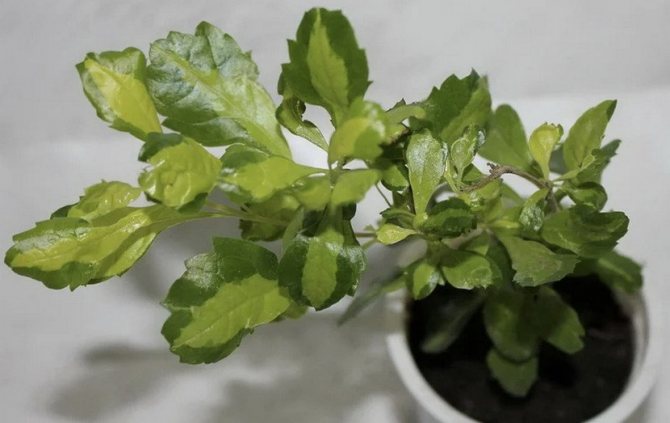

Diseases
Among the possible diseases, only root rot can affect durant. This happens when the humidity regime is not observed and excessive watering. To preserve the plants, carry out an urgent transplant with a complete replacement of the soil. Having removed the plant from the pot, shake off the soil, rinse the root. Remove rotten parts. Powder the affected areas with a mixture of root, foundation and activated carbon (proportions are similar to those described above).
Dry the root for a couple of hours in the sun. Then plant the plant in a disinfected, slightly damp soil and set aside in a dark place. The first watering after an urgent transplant can be carried out after 7 days by adding 1 liter of liquid, 5 g of foundation and 2 tablets of activated carbon.


Pests
Among pests, durant most often settles:
- aphid - it is eliminated by spraying with tobacco infusion - 400 g of tobacco dust must be poured with 5 liters of water and insisted for 24 hours, spraying is carried out daily 2 times in the morning and in the evening for a week;
- scabbard - eliminated by three-time treatment with phytoverm solution (1 ampoule per 2.5 liters of water) with an interval of 10 days
- spider mite - destroyed by four-time treatment with phytoverm (dosage is similar to that described above);
- whitefly - it will be required to carry out from 2 to treatments with the "Admiral" insecticide (10 ml per 1 liter of water) with an interval of 20 days.
Did you know? Plants of the vervain family are used to create drugs that stabilize the digestive tract.
Duranta is an interesting decorative flowering plant that came to our region from the tropics.When growing it at home, you need to pay more attention to the organization of a comfortable microclimate and pruning. In favorable conditions, duranta blooms 3-6 times a year.
Botanical description
Duranta (Latin Duranta) or indoor birch is a perennial plant of the Verbenaceae family. In home floriculture, the popularity of duranta is only gaining momentum, often the stalk of this plant is brought from tropical countries. Having raised a durant once, you will love her seriously and for a long time. Florists call the plant beautiful, unpretentious and “grateful”.
Fast growth
Duranta is a perennial shrub, if desired, a standard tree can be formed from it. Miniature varieties are grown as ampelous plants, they are also great for the formation of bonsai. Under natural conditions, the bush is able to reach a height of up to 5 m, when grown indoors, the sizes vary within 1.5-2 m.During the growing season (spring-summer), the duranta bush gives a considerable increase, the branches are widely spread in width, so count on sufficient space for the plant.
The bush branches well and grows quickly. Shoots are tetrahedral, as they grow, they are covered with light bark. Young shoots can droop and create a kind of arch. Some species have thorns on the shoots.
The leaf plates are 5-7 cm long, the surface is glossy. They are serrated along the edges, which resembles birch leaves. The shade of the leaves is bright green, variegated forms have white or yellow spots.
The plant was discovered back in 1737 by Karl Linnaeus. The official name is given in honor of Castor Durante, an Italian physician, botanist and poet. In Russia, durante is sometimes called a room birch (due to the similarity of leaf plates) or a pigeon berry (duranta bears fruit with small berries). In Europe, the plant is found under the name of a farewell tear or heavenly flower.
Where is found
The distribution area of the plant is the tropical regions of South America, where about 30 species of durant are widespread. Some varieties can be found in the jungles of India.
In leaving, the durant is unpretentious and undemanding. If you have experience growing plants native to the tropics, there will be no difficulties at all. The bush needs warmth, bright diffused lighting, moderate watering and high humidity. Also, do not forget about feeding and pruning.
Dangerous beauty
Care must be taken when contacting the plant. Absolutely all parts of the plant are poisonous. After flowering, the duranta ripens the fruits of a bright orange color - a child, a curious guest or a pet can accidentally feast on them. For safety reasons, block access to the plant. Be sure to carry out work on transplanting and pruning with gloves, wash your hands thoroughly even after touching the plant.
Flowering duranta
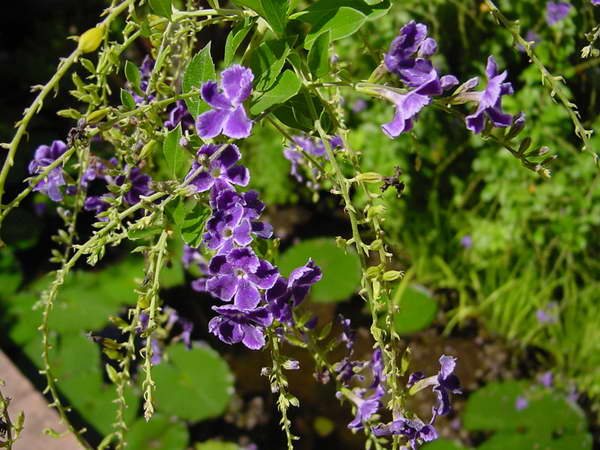

How duranta blooms
The most beautiful thing about duranta is the inflorescences hanging in clusters. Each flower consists of five symmetrically located petals, in shape they vaguely resemble viola inflorescences (pansies). Colors in white, blue, blue, lilac, purple tones. Flowers of dark shades with snow-white edging are especially spectacular.
Inflorescences appear at the ends of the shoots. In some varieties, flowering is accompanied by an aroma comparable to fragrant irises or vanilla. Provided the necessary conditions are provided, the durant is capable of blooming for about six months. The flowering period lasts from late spring to mid-autumn. The fruits are set by pollination. They are round in shape, like cherries, ripe fruits have a bright orange hue.
General information
Until a few decades ago, duranta was often found as an exotic home plant. However, even now, there are still lovers of this unusually beautiful plant who are engaged in growing it at home.
In fact, Duranta is the name of not one type of flower, but the entire subspecies, which includes perennial shrubs with beautiful flowers, representing the Verbenov family. In total, there are about twenty-two types of them.
The plant got its strange name thanks to the scientist from Italy Castor Durante. Durant is popularly called “room birch" or "pigeon berry". Abroad, you can hear such names as “farewell tear" or "heavenly flower».
The main advantage of an exotic shrub is its beautiful flowers with blue, lilac, white or dark purple petals. There are also varieties with a white center and a border around the edges of the purple petals.
Flowers are collected in inflorescences, eaten into long, luxurious clusters. After the duranta fades, berries of a bright orange hue appear. The leaves of the bush are not inferior in beauty to flowers. They can be variegated in color, but often have a dark green color and jagged edges.
The plant has dense and spreading branches. It is very poisonous. Durant is cultivated as a shrub with spreading branches. From a creeping plant, a miniature bonsai can be formed. In the wild, Duranta grows in South America. Domesticated shrubs can be found not only on the windowsill, but also in landscape design.
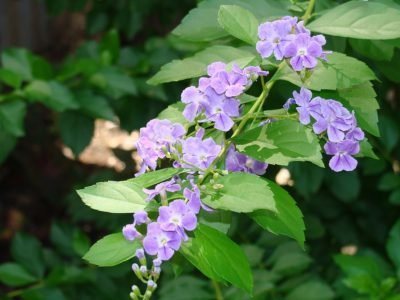

Popular types
Currently, there are more than 20 species of this flower. However, only some of them are grown indoors, namely:
- Duranta Plumier is a shrub reaching 2.5 m in height. Ovate leaves are located on tetrahedral stems. During flowering, many small flowers bloom, which have a blue or purple color. Fruits are similar in size and shape to cherries, but are yellow in color. This species is grown both indoors and in the garden.
- Variegated duranta is an evergreen and spreading bush that grows in nature up to 4-6 m in height. This plant has very attractive bowl-shaped flowers, consisting of 4-5 lilac petals. Mainly grown in indoor pots and hanging planters.
- Duranta Little Geisha is a hybrid variety with beautiful flowering. The petals are deep purple with a white center and wavy edges.
- Lorenza - differs from other species in the original shape of the leaves. They are oval with a rounded top and characteristic denticles along the edges. The plant has orange fruits, and the main color of the duranta flowers is white.
You can also note such types and varieties of this flower as Lemon Drop, Golden Land, Cuban Gold, etc.
Short description
In nature, this plant is a shrub with erect or strongly branching shoots, which are covered with a light brown bark. An adult bush can reach five meters in height. The stems have a ribbed surface covered with thorns. Light green glossy leaves grow oppositely on short petioles. The leaf plates can reach 3-7 cm in length and 1.5-3 cm in width.
In June, racemose inflorescences bloom, reaching 20 cm in length and consisting of tubular flowers. The flowers can be white, blue, blue or purple, depending on the species. After flowering, fruits of a yellow-orange color are formed on the brushes. In their shape, they resemble a drop, which is why the plant is called a golden drop.
It should be noted that the fruits and leaves of the shrub are poisonous, so care must be taken when caring for it.
Growing duranta from seeds
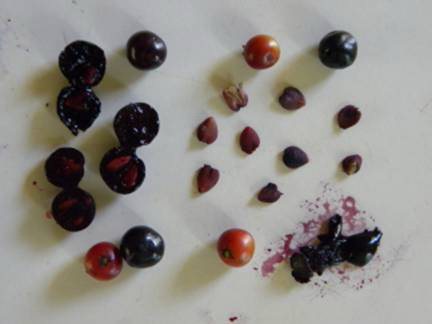

Seeds and fruits of duranta photo
Mostly Duranta seeds are purchased in online stores and they are not so cheap. It takes effort to grow young plants from seeds. Start sowing in late winter and early spring.
- Soak the seeds in a solution of a growth stimulator (Zircon, Epin).
- Sow seeds in wide containers with a loose, light substrate (sand + peat or moss + peat).
- The seeding depth is 0.5-1 cm.
- Spray crops from a fine-dispersed sprayer.
- You will need to create the effect of a greenhouse: for this, cover the top with a transparent plastic lid, glass or oilcloth, but raise the shelter daily to ventilate.
- Lighting is required diffused, and the air temperature is at 25 ° C.
- Moisten the soil surface by spraying as needed.
- The sprouts will appear after 4-6 weeks, so be patient. The shelter can be removed.
- After a couple of real leaves appear, plant the senets in separate containers.
- Under favorable conditions, a durant grown from seeds will bloom in the 3rd year of growth.
For variegated forms, it is better to use seed propagation, since when cuttings they may not reproduce the color of the leaves.
Duranta pests
Like many houseplants, it suffers from aphids, spider mites, scale insects and requires care with protective compounds. You can fight them, it is not fatal for a flower. Of course, if you ignore the appearance of pests, then this will not lead to anything good.
Helpful hints:
- Spray the leaves with camphor alcohol. In 1 l. water 2 drops of alcohol. After that, the leaves will be juicy;
- Feed with castor oil during flowering. In 1 l. water 1 tsp.
- In winter and autumn, flowers are watered in the morning, and vice versa in spring and summer, in the evening.
Flowering and pruning
Duranta shaped like a bonsai
Duranta blooms from April to September. But if the plant stood in the shade or was not provided with a cool wintering, flowering, most likely, will not come or will be poor. It is best to cut off faded inflorescences - if the fruits begin to ripen, the formation of buds will stop.
The plant needs regular pruning, the tips of the shoots are pinched to form a beautiful crown. Before the intended flowering, pruning is not worth it, pinching too.
Duranta is suitable for creating bonsai. By pinching and pruning, you can form a semi-ampelous bush or a standard tree from it, providing support. In any case, plant growth must be limited.
Top dressing durants
Top dressing of duranta is carried out mainly in summer. In winter, you need to feed the plant if necessary. If the shrub is warm, fertilization should not be stopped. If a dormant period has been organized, in this case, feeding must be canceled.
The choice of fertilizer must be based on the plant variety. If the durant is variegated, you should choose a top dressing for deciduous ornamental plants with an increased nitrogen content for it. This microelement will allow Duranta to acquire a gorgeous foliage.
If the variety of shrubs is exactly flowering, then it should select a feed for the flowering type of plants. Also, do not forget about the systematic introduction of organic fertilizers into the soil.


Conditions for growing at home
This perennial evergreen shrub prefers sunny or semi-shaded (in the heat) places. A tropical plant does not tolerate subzero winter temperatures, the minimum permissible temperature is + 14 ° C. In our country, it is recommended that the durant be grown in pots, so that after it gets colder, the tropical sissy can be moved indoors. It is recommended to do this around the end of October, until the cold weather can cause serious damage to the root system and leaves.
Location and lighting
Duranta is an extremely easy-to-grow perennial shrub. The plant is absolutely not frost-resistant, it is afraid of any subzero temperatures. These shrubs bloom in well-drained, moist, fertile soils.In container growing, pots are filled with breathable, well-fertilized potting soil.
Important! The durant erectus shrub produces many thin thorns that can injure the skin and eyes, and the leaves in sensitive people cause dermatitis. Safety goggles, long sleeves and gloves should always be worn when handling these plants.
Temperature regime
The shrub requires different temperatures at different times of the year. The optimum temperature in summer is + 20 ... + 22 ° C, the maximum permissible heat is + 25 ° C. Air temperature above these indicators leads to shedding of the leaf cover. In order to avoid the loss of decorativeness of the shrub, before the onset of heat, the pots with plants are rearranged in partial shade.
In winter, the optimum temperature for duranta is + 18… + 20 ° C, the minimum allowable temperature drop is + 14 ° C. The plant reacts painfully to sudden changes in temperature and has a positive attitude towards airing the room. These two factors must be taken into account in winter, when the room is heated. Do not place durant pots near radiators and other sources of heating; cold drafts are also undesirable.
Air humidity
This shrub is native to the tropics and therefore requires high humidity. Such humidity can be provided by daily morning spraying of the aerial part of the plant from a spray bottle. Until the flowers bloom, completely spray all the leaves and branches, after the beginning of flowering, only the leaves are moistened.


Duranta in winter
It is necessary to take care of the domestic durant during the snake period as follows. The plant needs to provide the required amount of light. When shortening daylight hours, you can add artificial lighting using fiitolamps.
The air humidity should be reduced, the same should be done with the temperature regime, reducing it to 12-15 degrees. Watering should be carried out as the soil dries up, but not more often than once a week.
If the shrub grows on the street, it should be protected from severe frosts by covering the soil near the roots with sawdust, bending the branches to the ground and insulating the durant, putting a cover of their polyethylene on it. Thus, the shrubs will not be afraid of frosts and they will spend the winter without freezing.
